OpenID Connector for Google Cloud Identity with User Sync
Goal
After completing this setup guide, you will have setup Google Cloud Identity and your Atlassian product for the SAML SSO app and also User Sync. Additionally, you will enable the SSO redirection and test SSO.
Prerequisites
To use the SAML SSO app with GSuite, you need the following:
An GSuite subscription
A (trial) subscription for the SAML SSO app
Admin access to your Atlassian product
Video Guide
Here you will find a detailed video guide soon.
Step-by-Step Setup Guide
Configure Google Cloud Identity for User Sync
For the following setup, it's recommended to perform it in a browser where you're just logged into the Google account you are using for configuring GSuite.
Other Google sessions might make it hard for you to walk through the setup successfully, especially when authorizing the Gsuite app from inside the connector configuration.
This page contains information for how to setup User & Group Sync and G Suite. Note, it is recommend to follow the video or the detailed User guide. If you are familiar with setting up G Suite projects, feel free to follow the Quick start guide.
Quick start guide
Login to the Google API Console. Click on the current active project.
Click on "NEW PROJECT".
Enter a "Project Name" and click on "CREATE". For this tutorial, it is calls "Test Project". This can take a second.
In the next window, click on your just created new project.
After opening your project, click on "Library".
In the search bar, type "Admin SDK" and click on the "Admin SDK".
On the next page click on "ENABLE".
Now, click on "Credentials" in the left panel.
Click on the "Configure consent screen" button.
Choose an "User Type" (see https://developers.google.com/identity/protocols/googlescopes?hl=en_US) and click on "CREATE".
On the next screen, enter "App name" and "User support email".
Scroll down to "Authorized domains" and enter your personal domain, e.g. "mycompany.com". Press the ENTER key to add the domain.
Enter an email address in the "Developer contact information" section.
Click on "SAVE AND CONTINUE".
Go back to the Credentials tab on the left menu. On the next page, click at Create Credentials and click at OAuth client ID.
In next window, choose "Web application".
Enter an "Authorized redirect URIs" https://<your-atlassian-product-base-url>/plugins/servlet/de.resolution.usersync/oauth2/authorize then click "CREATE".
In the next window you can see your "client ID" and your "client secret". You will need both for setting up User & Group Sync, thus save them somewhere where you can find them for the next step.
Now User & Group Sync will be setup in your Atlassian application. Press "Create Connector" and choose "Google Cloud Identity".
Enter your "Client ID" and "Client Secret" that you have copied earlier (step 18). Click on "Start Authorization".
If you are a Google Cloud Identity Administrator, click on "Go to Google". Otherwise, copy the generated messaged and provide it to your administrator, and you can continue the configuration meanwhile by closing that window.
The plugin will show you if the authorization was successful.
Your configuration is now done, click on "Save and Return".
You are now ready for your first sync. Click on "Sync" in the Connector overview.
User guide
Login to the Google API Console. Click on the current active project.
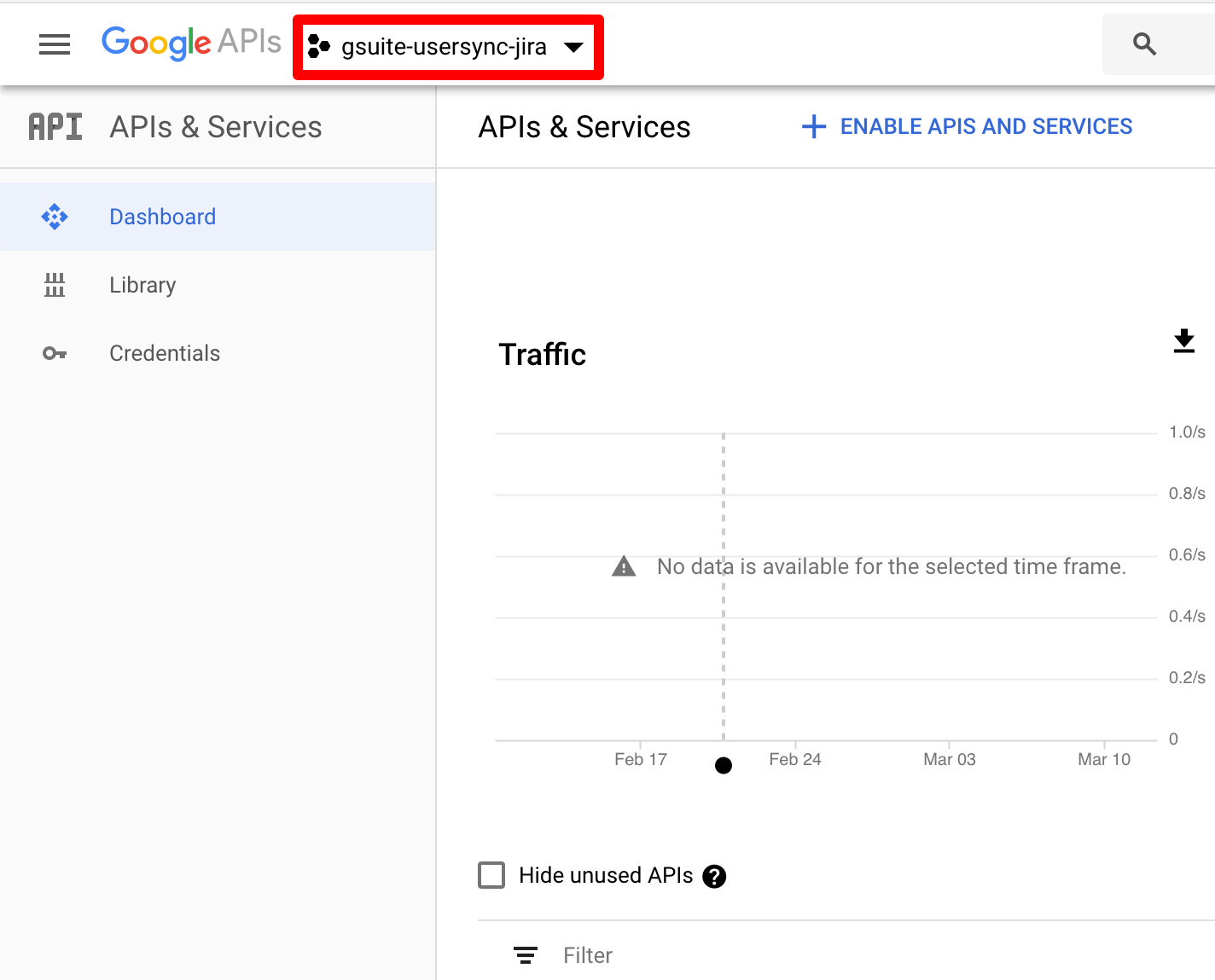
Click on "NEW PROJECT".
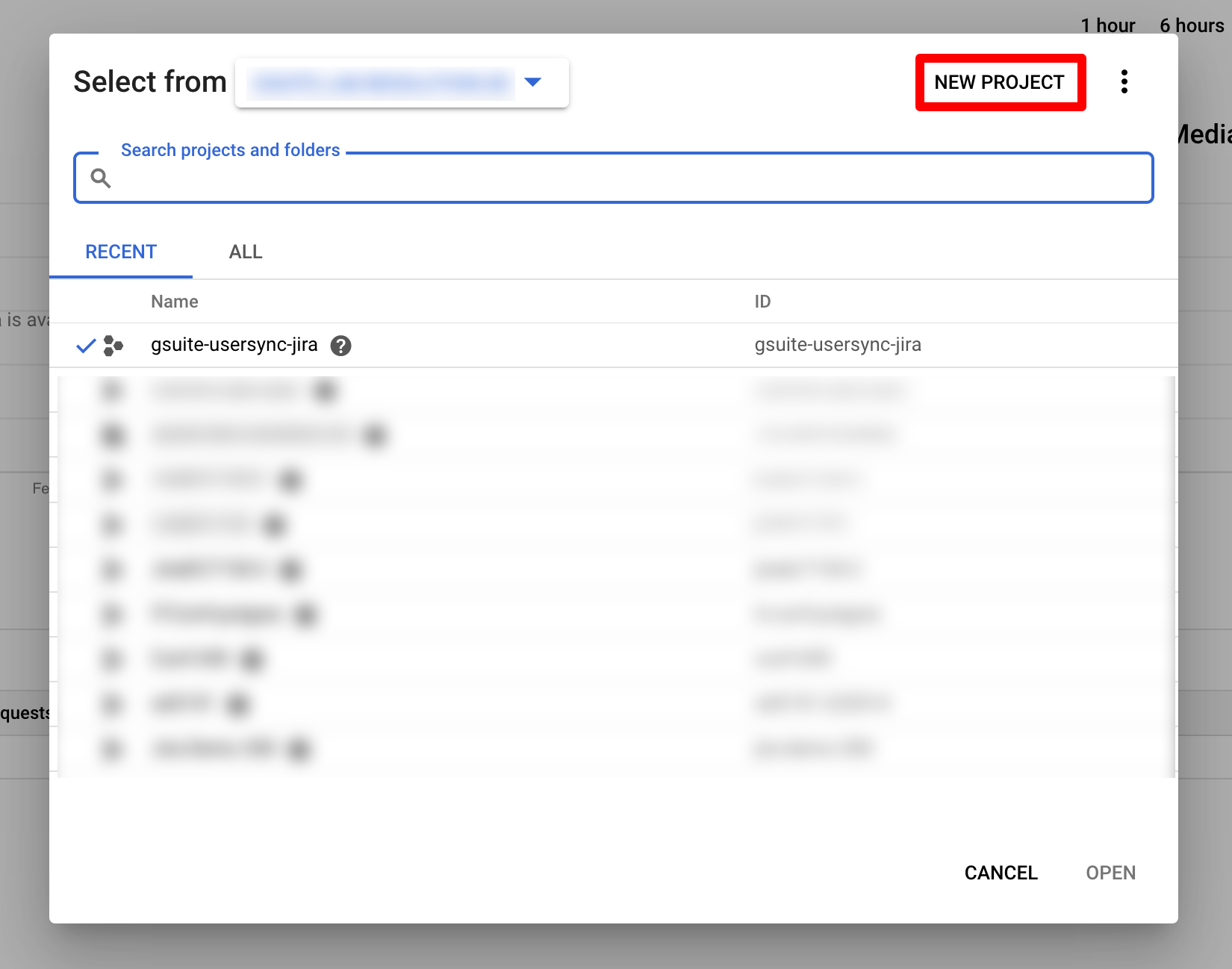
Enter a "Project Name" and click on "CREATE". For this tutorial, it is calls "Test Project". This can take a second.
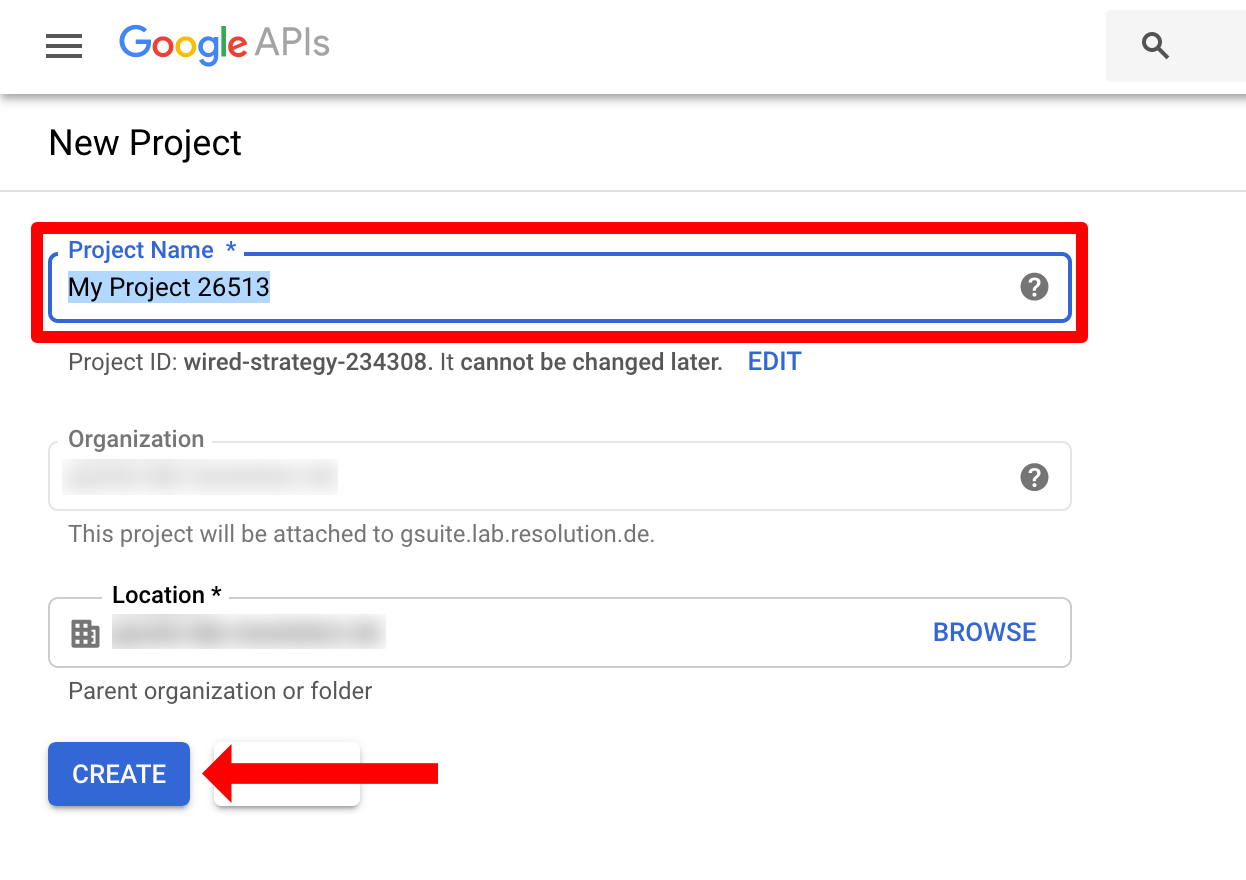
Open your project list again and click on your just created new project.
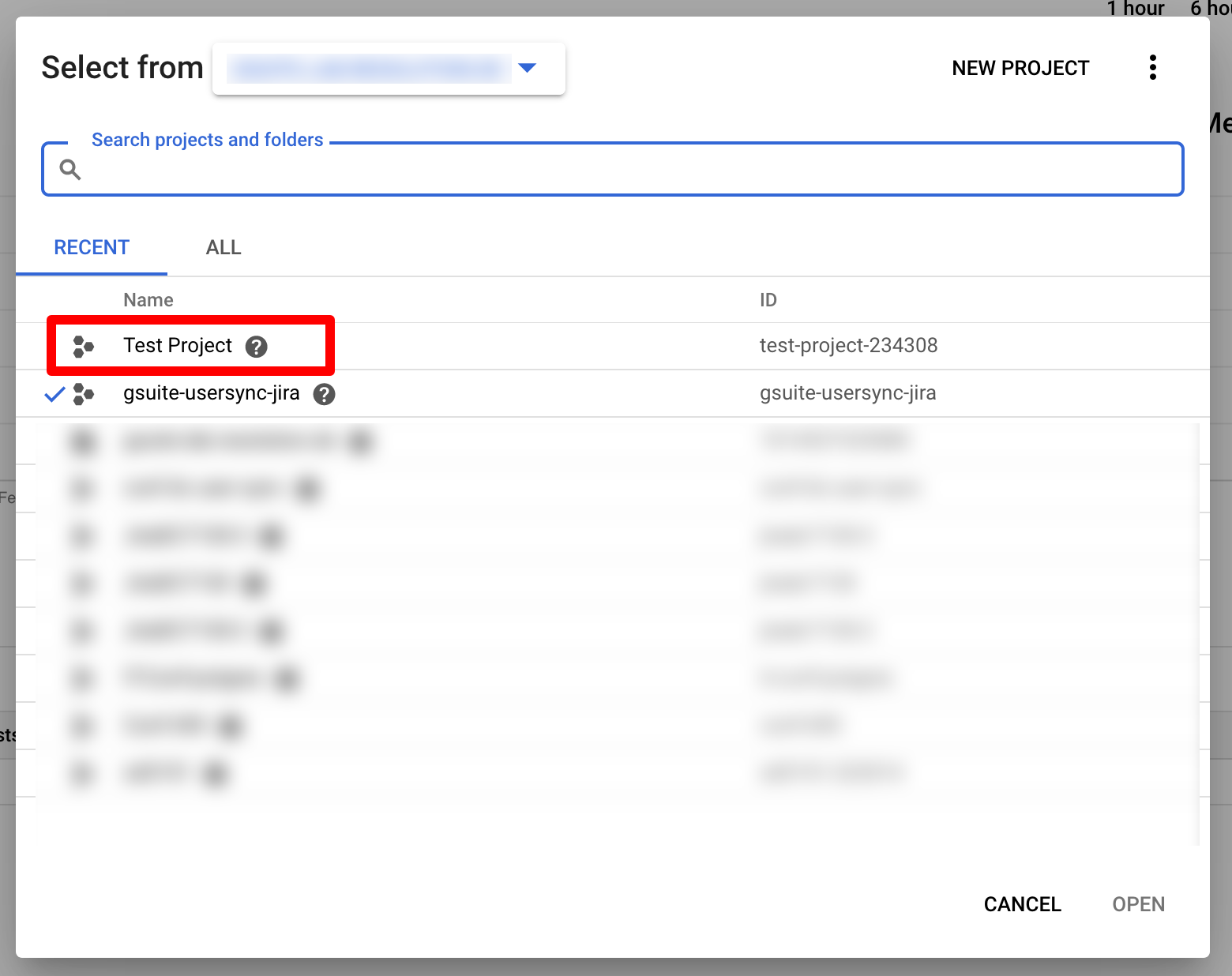
After opening your project, click on "Library".
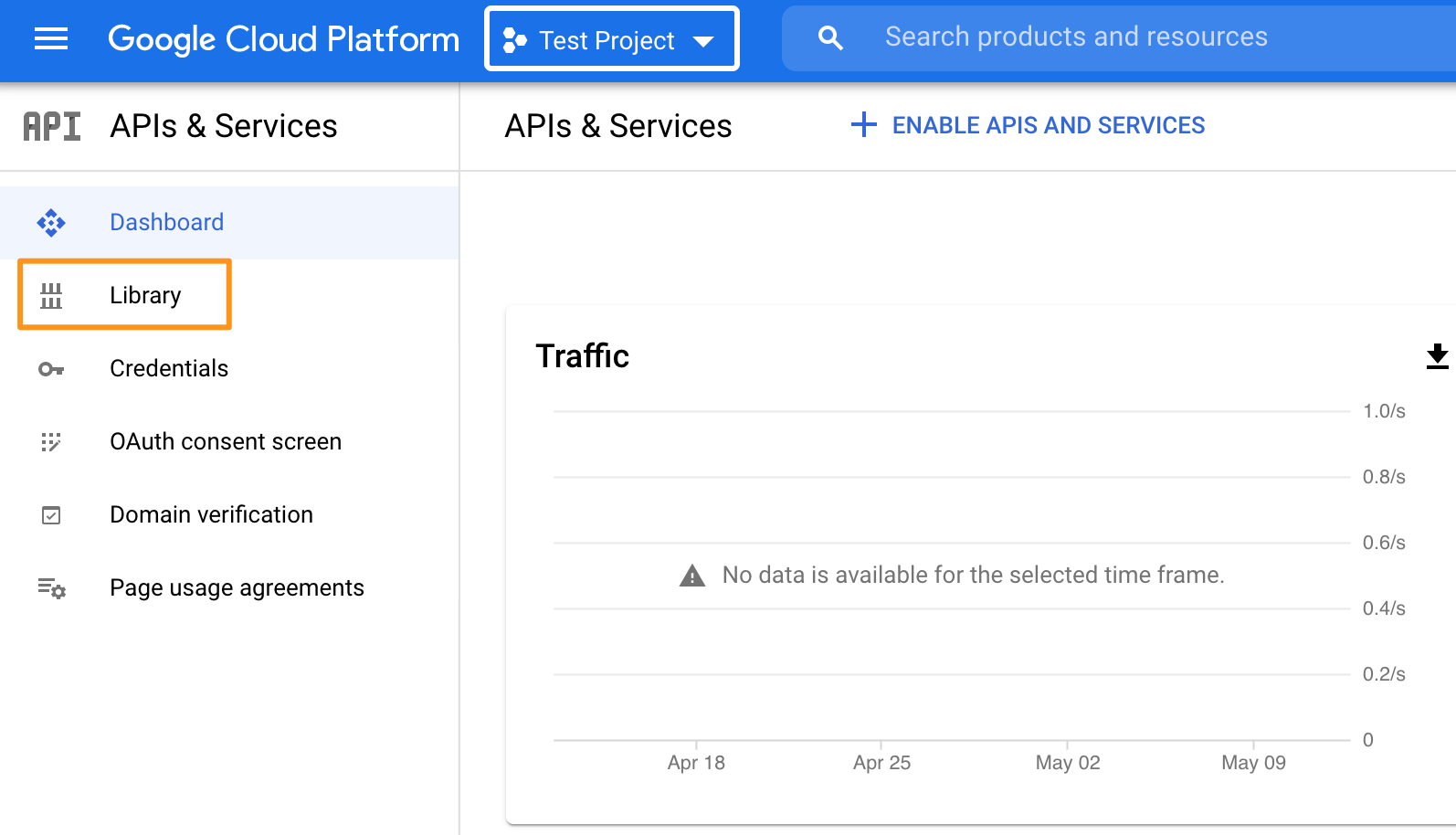
In the search bar, type "Admin SDK" and click on the "Admin SDK".
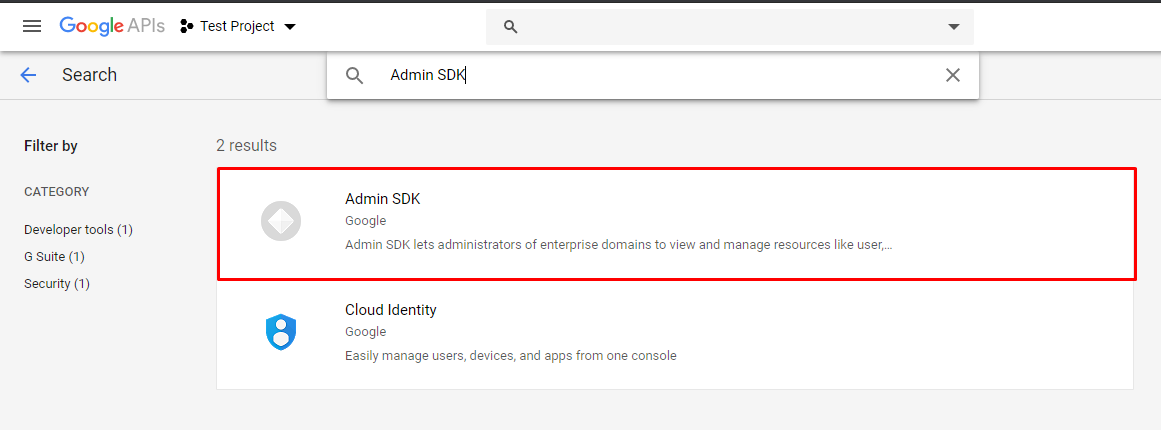
On the next page click on "ENABLE".
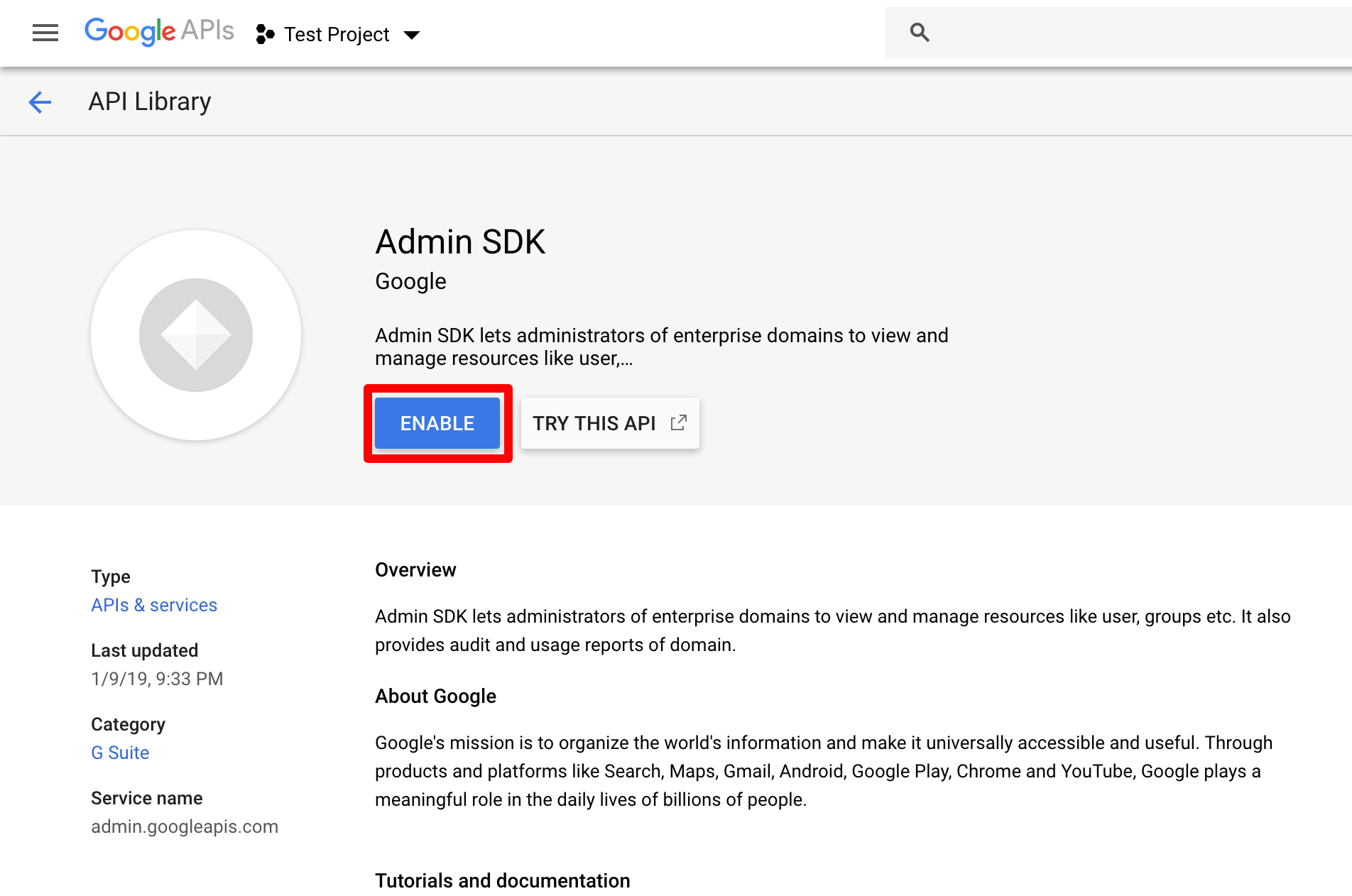
Now, click on "Credentials" in the left panel, and click on "Configure consent screen"

Choose an "User Type" (see https://developers.google.com/identity/protocols/googlescopes?hl=en_US) and click on "CREATE".
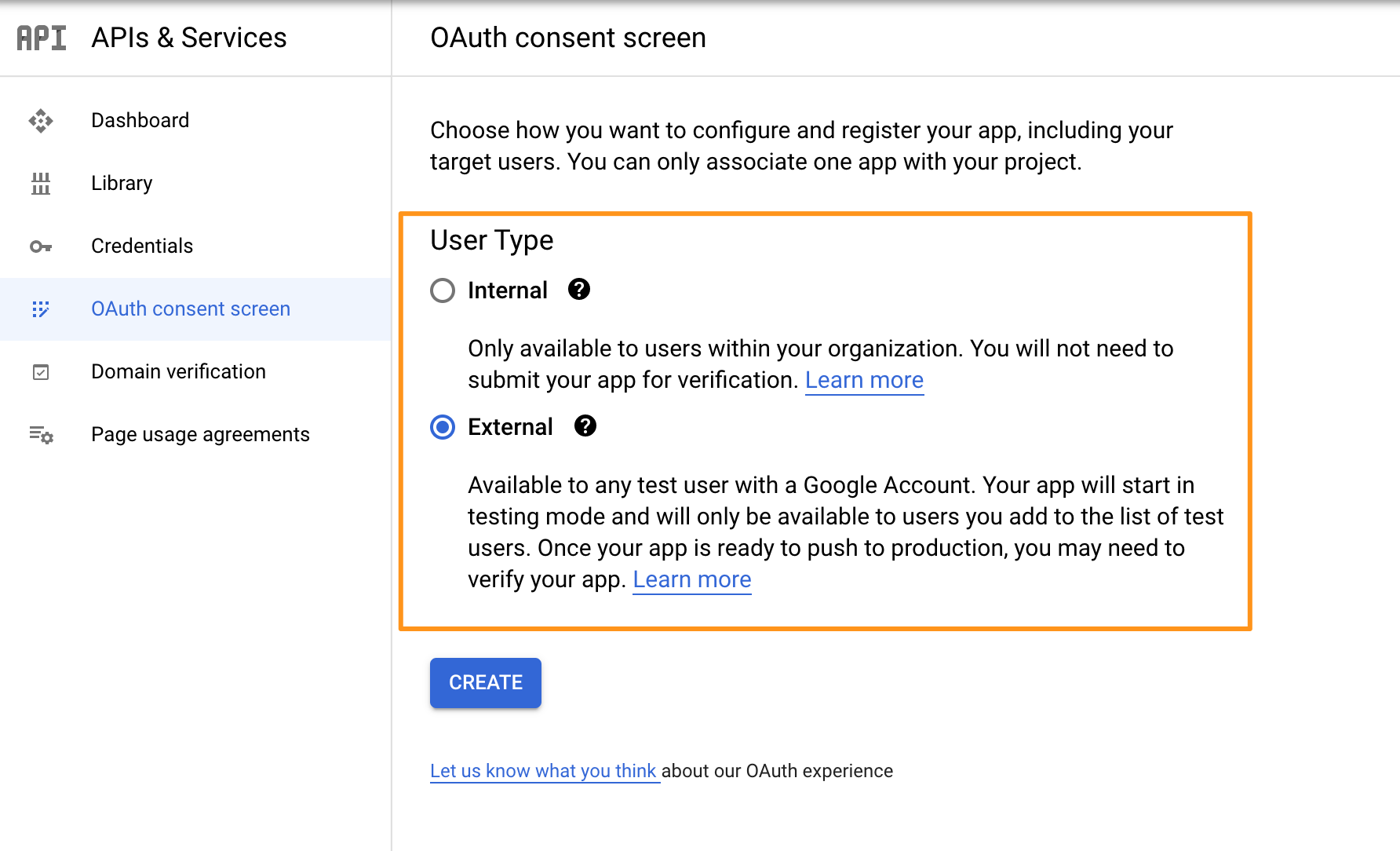
On the next screen, enter "App name" and "User support email".
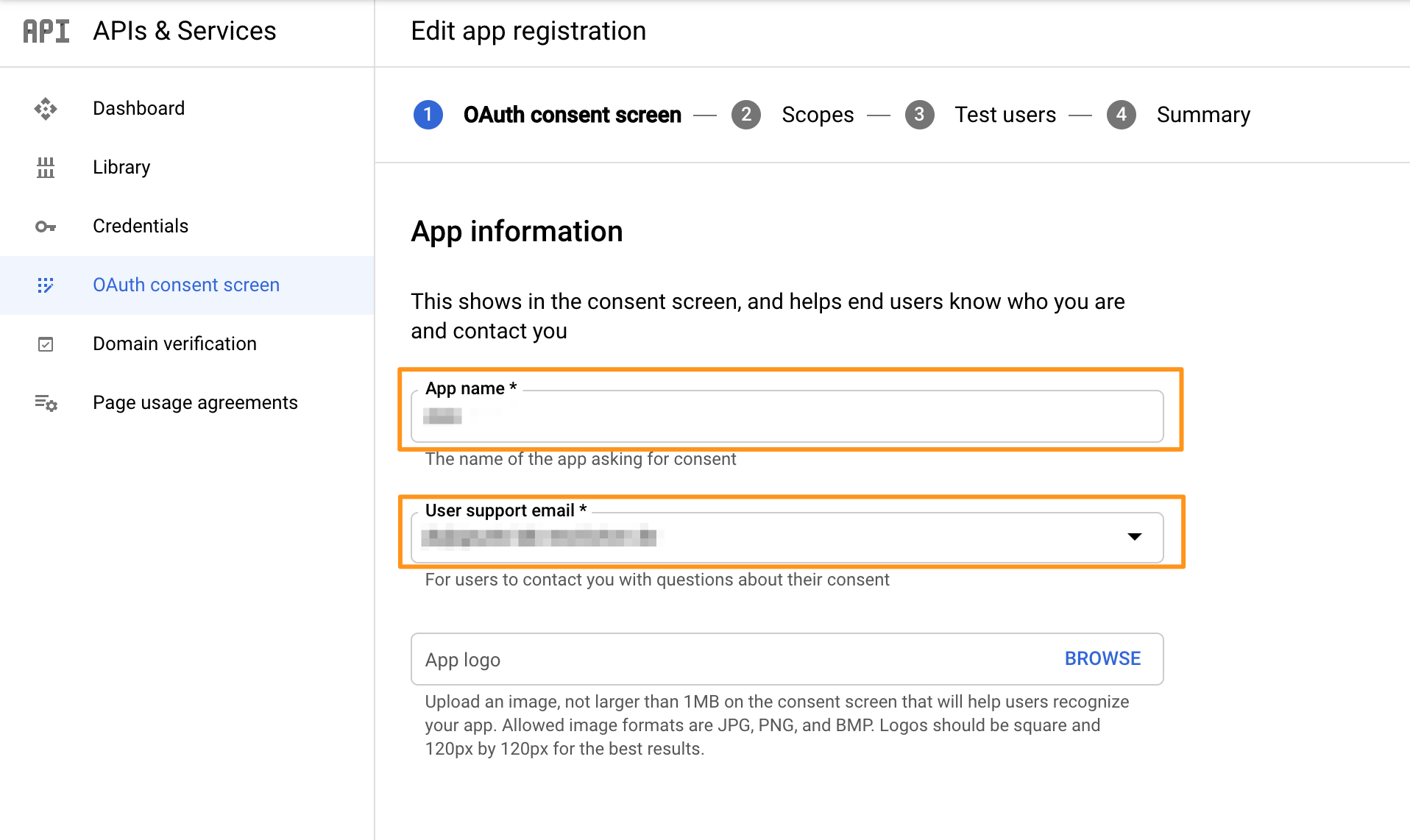
Scroll down to "Authorized domains" and enter your personal domain, e.g. "mycompany.com".
Enter an email address in the "Developer contact information" section.
Click on "SAVE AND CONTINUE".
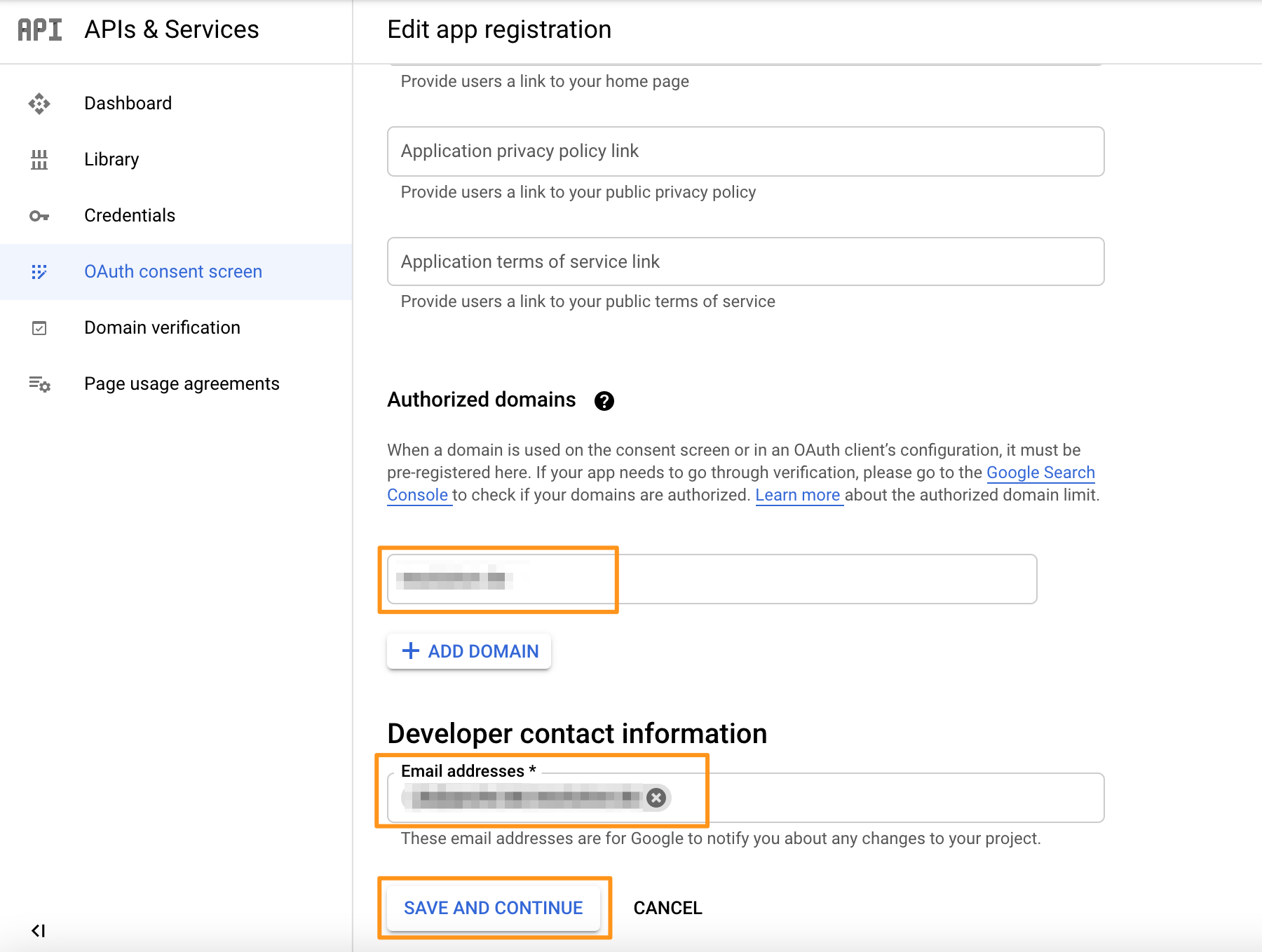
Go back to the Credentials tab on the left menu. On the next page, click at Create Credentials and click at OAuth client ID.
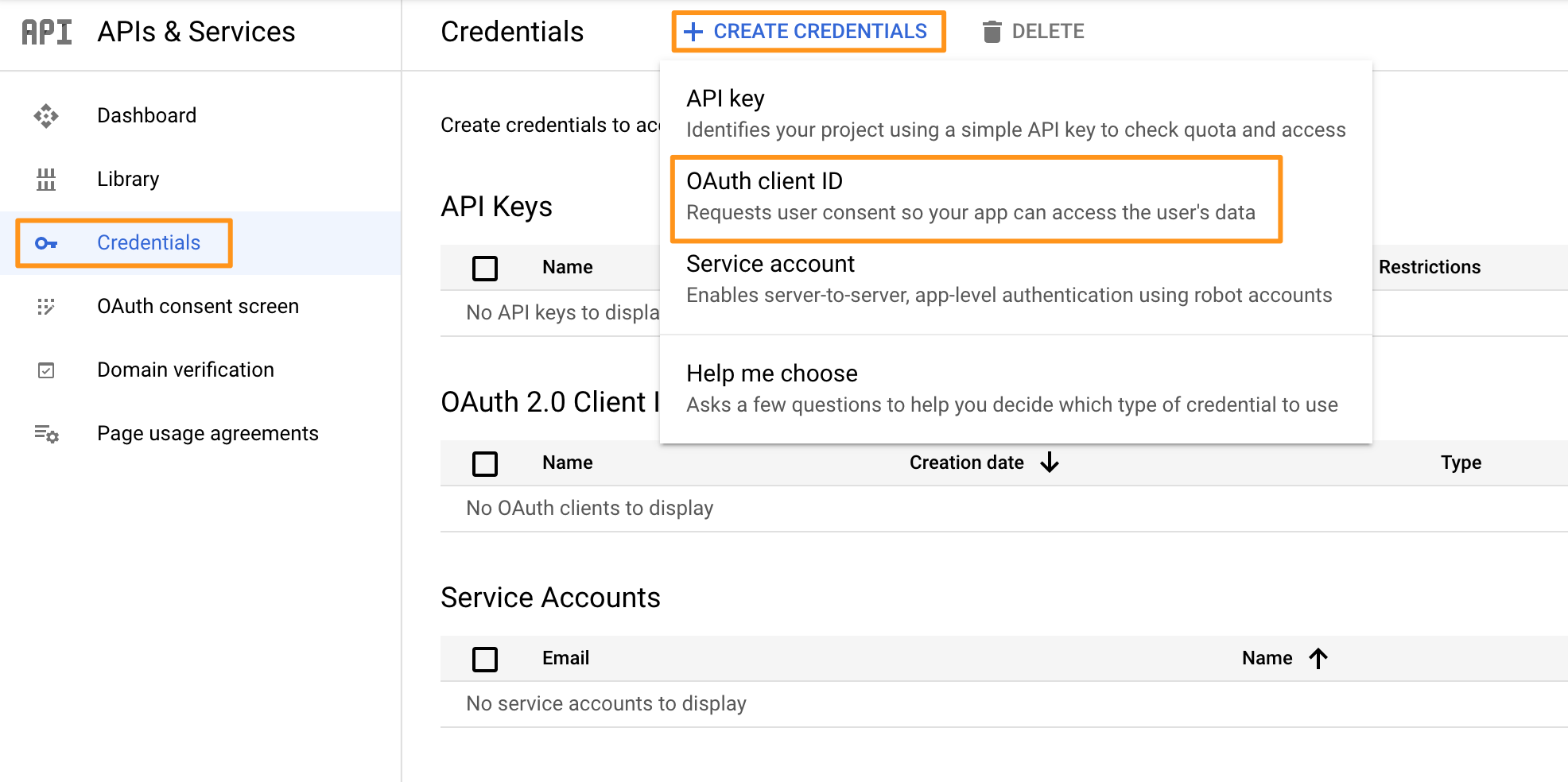
In next window, choose "Web application".
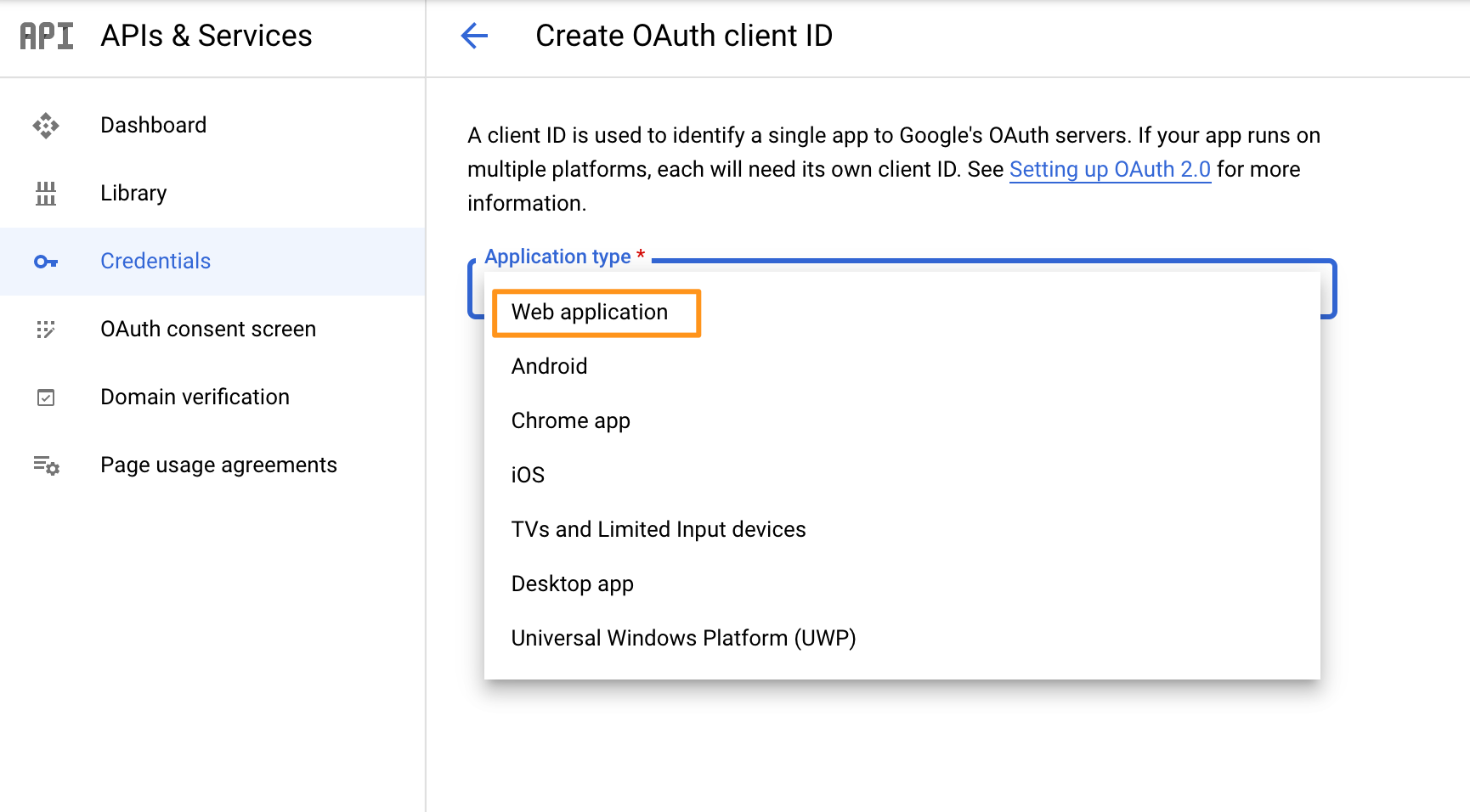
Enter an "Authorized redirect URIs" https://<your-atlassian-product-base-url>/plugins/servlet/de.resolution.usersync/oauth2/authorize then click "CREATE".
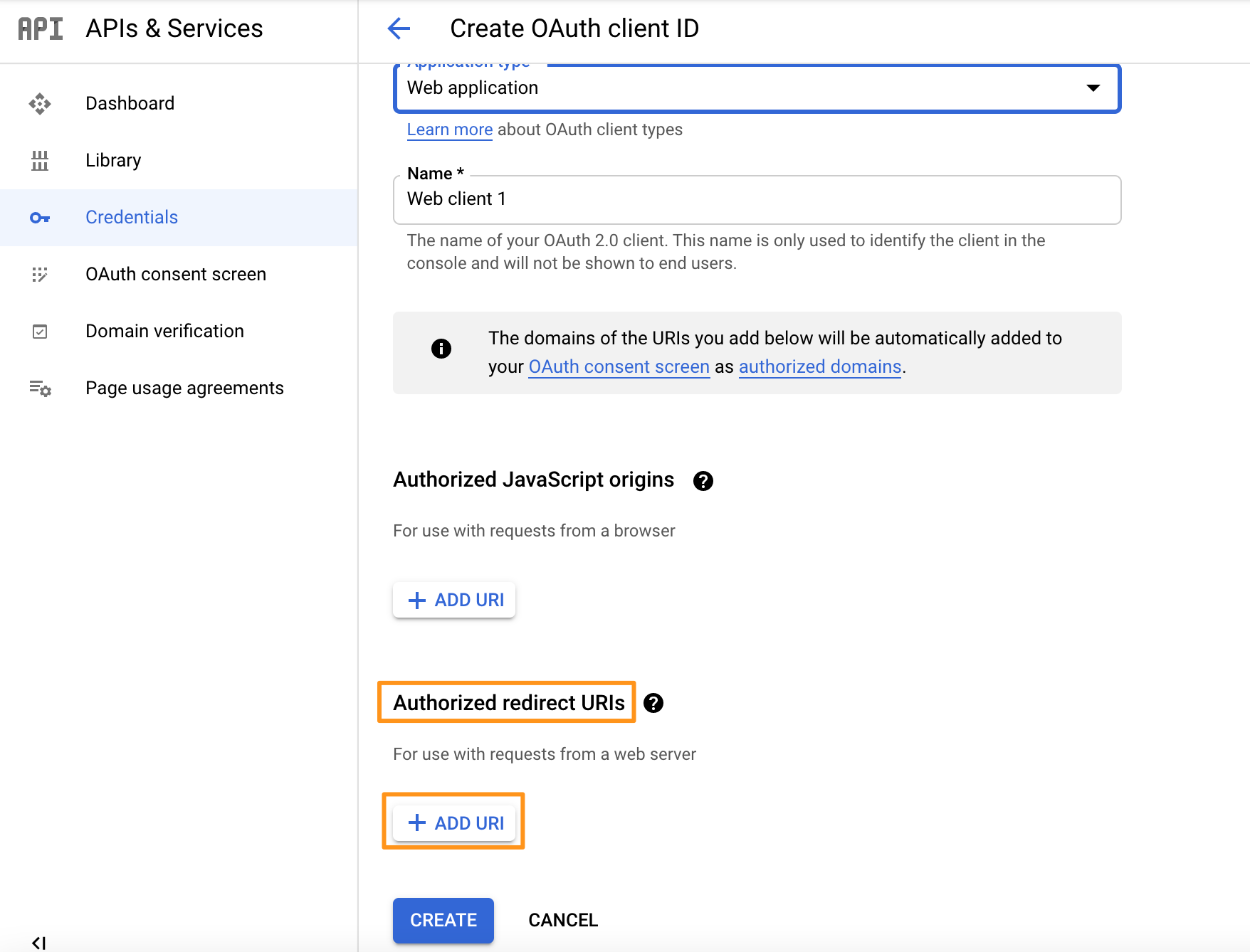
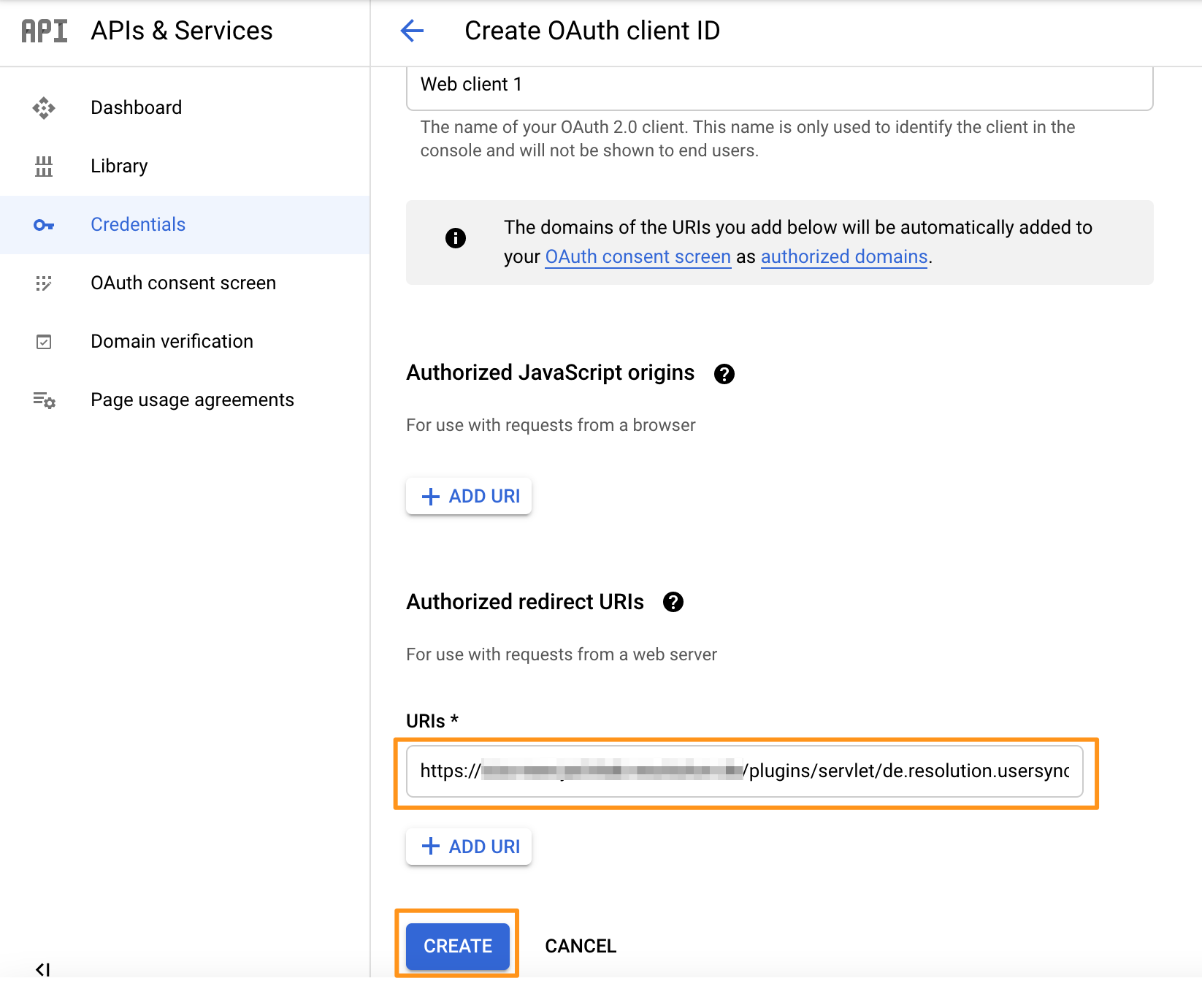
In the next window you can see your "client ID" and your "client secret". You will need both for setting up User & Group Sync, thus save them somewhere where you can find them for the next step.
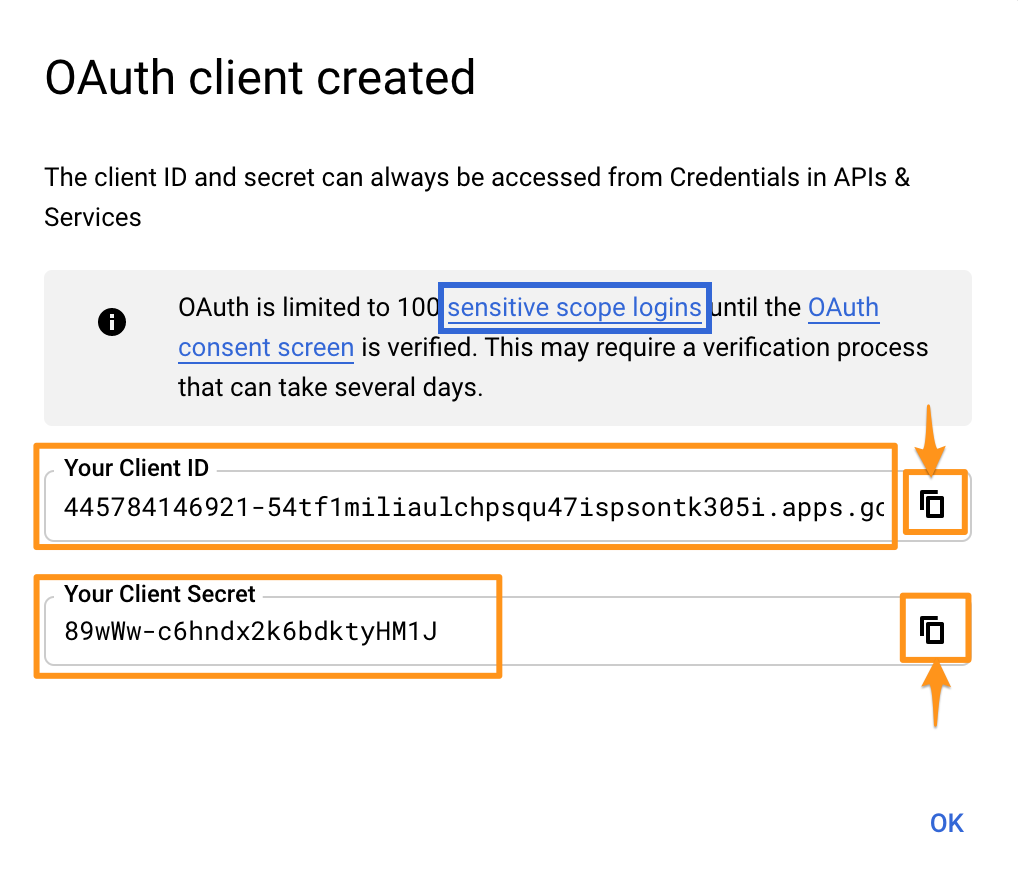
Now User & Group Sync will be setup in your Atlassian application. Press "Create Connector" and choose "Google Cloud Identity".
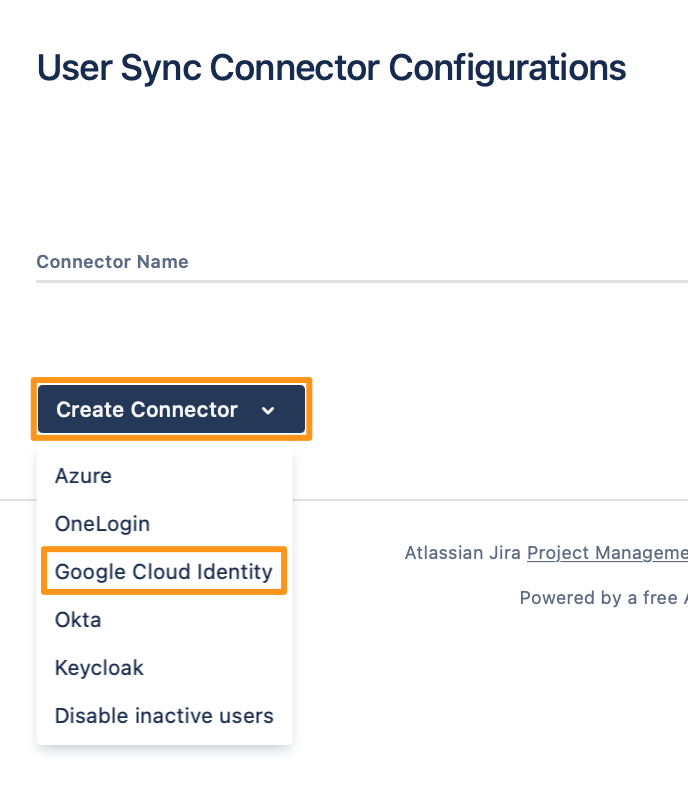
Enter your "Client ID" and "Client Secret" that you have copied earlier. Click on "Start Authorization".
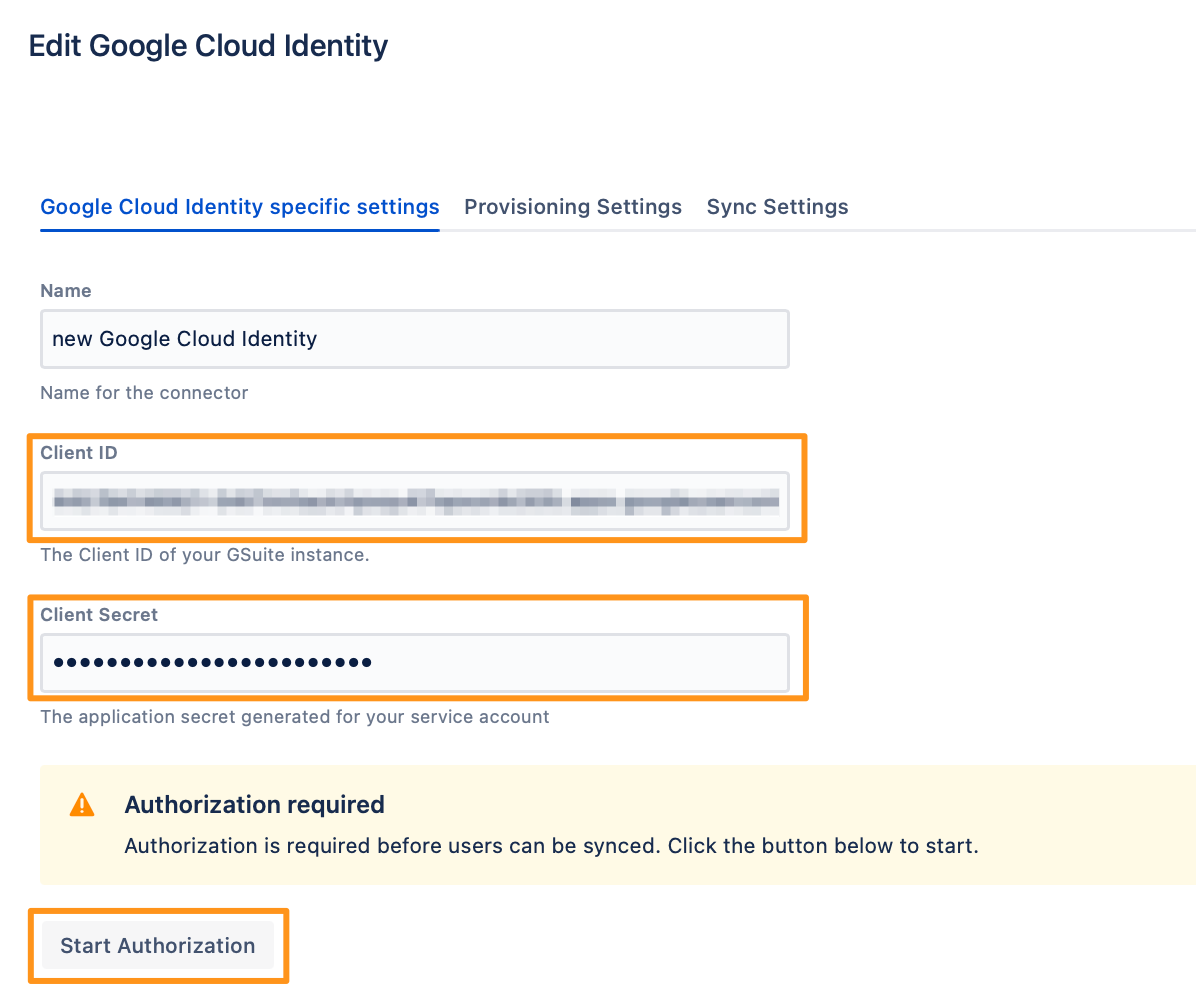
If you are a Google Cloud Identity Administrator, click on "Go to Google". Otherwise, copy the generated messaged and provide it to your administrator, and you can continue the configuration meanwhile by closing that window.

If the authorization was successful, you will see the following.
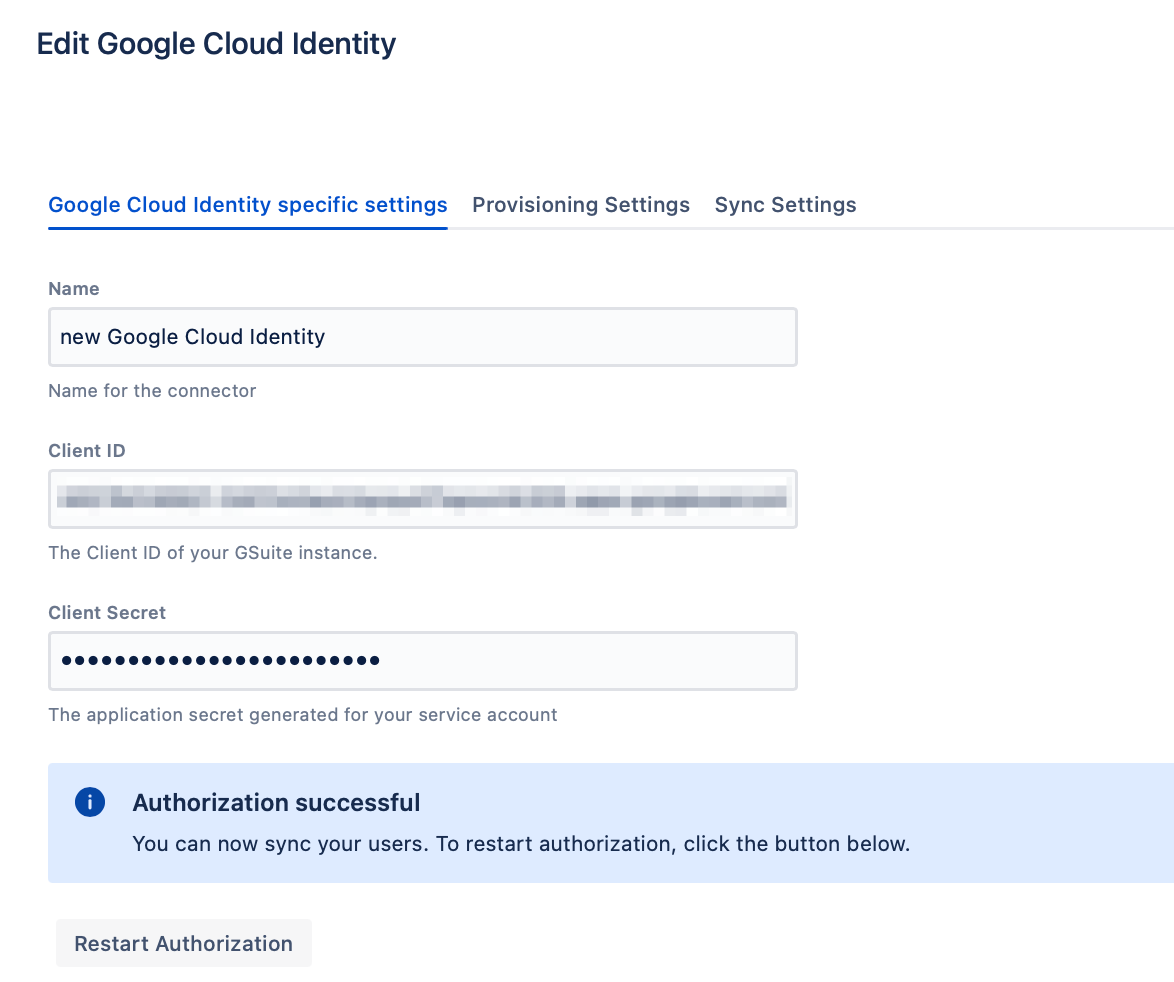
To take the full advantages of User & Group Sync, go to the Sync Settings tab and enable "Scheduled Synchronization". You can control the sync interval via a Cron Expression.
Do not forget to save your configuration by clicking on "Save and Return".
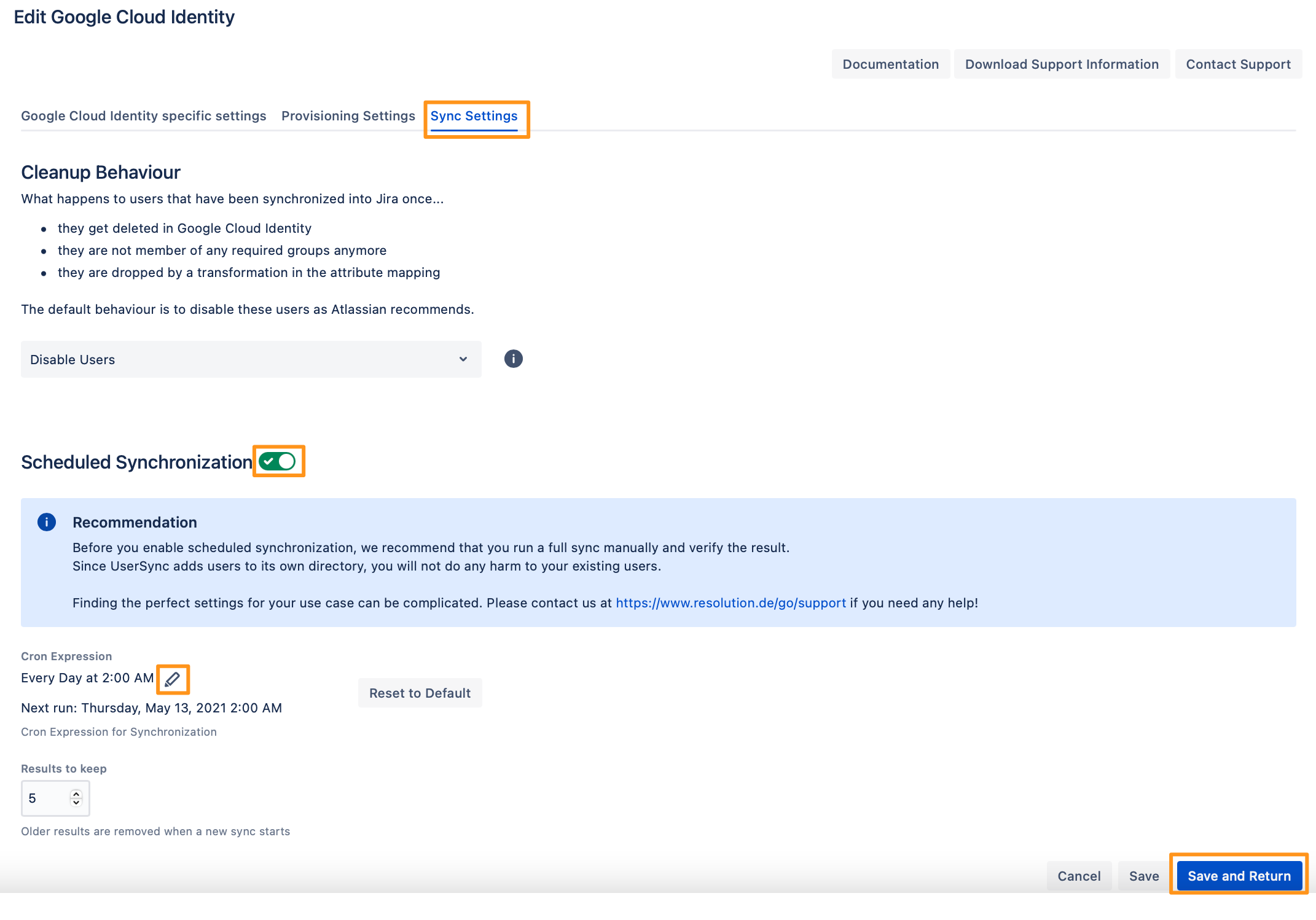
You are now ready for your first sync. Click on "Sync".

Configure Google Cloud Identity for the SAML SSO App
For the next steps, please go to Manage apps (or addons), choose SAML SSO and click Configure.
First Steps - Wizard
After you clicked "Configure", the Wizard will be triggered. If not, or if you want to add another Identity Prover (IdP) to your existing configuration, click on "+ Add IdP". This guide assumes, that there is no IdP configured.
The Wizard greets you with information, click on "Add new IdP" to proceed.
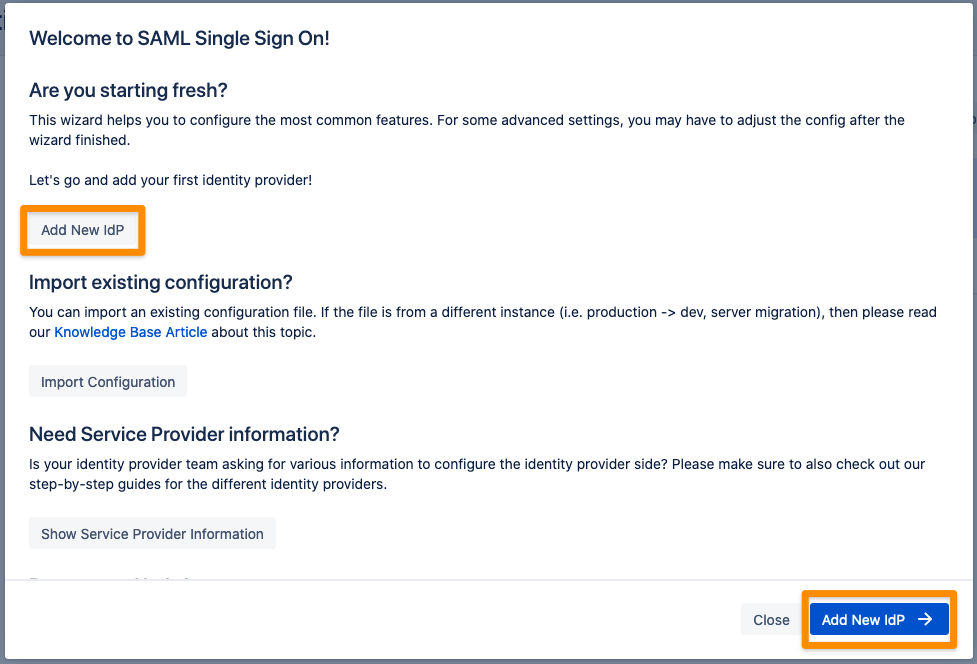
Select Google Cloud Identity for your identity provider and select OpenID Connect for the authentication protocol. Enter a unique name and click Next to continue. 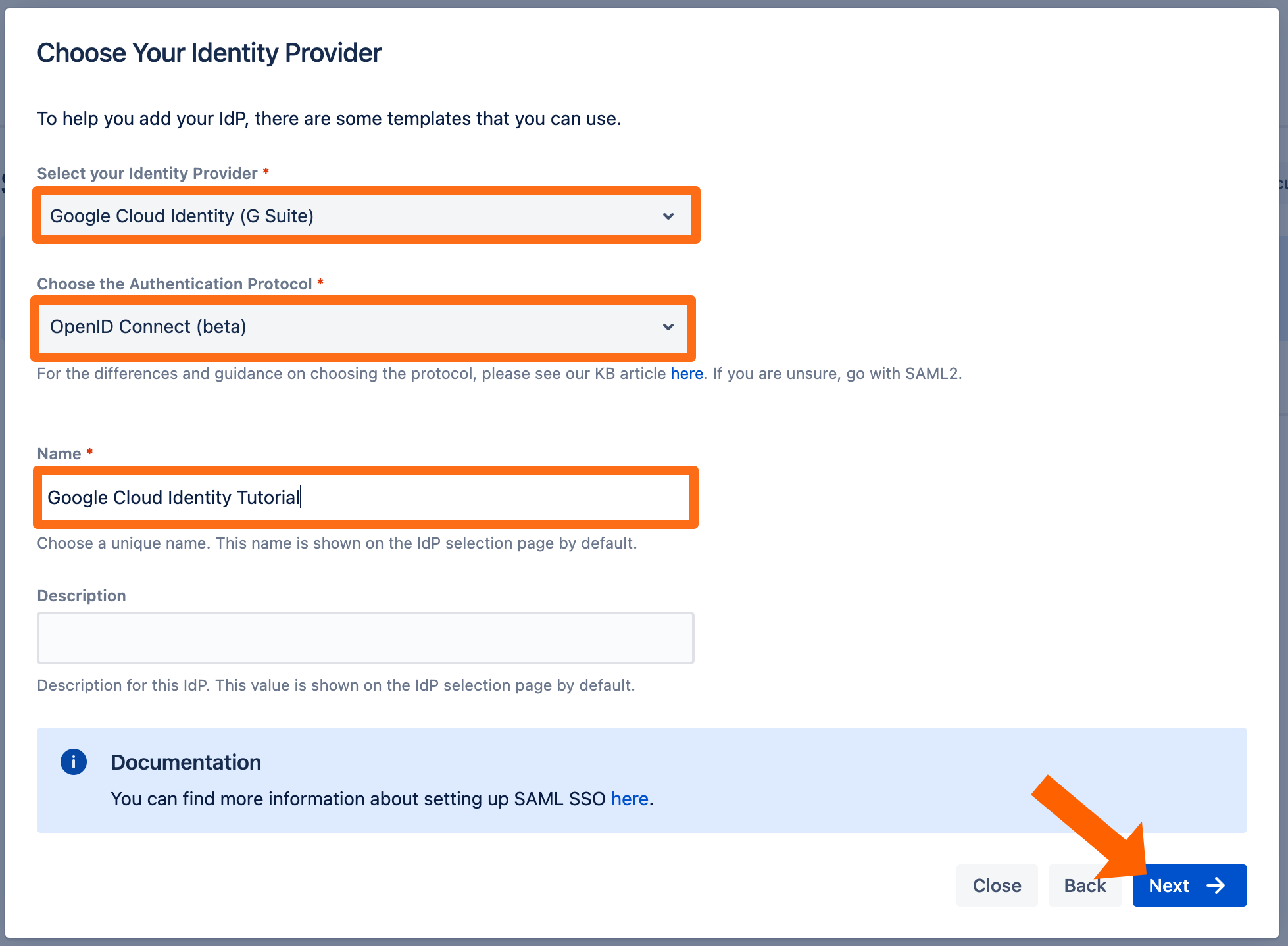
Copy the callback url to your favourite text editor. 
Go to https://console.cloud.google.com and login as an administrator.
Click the name of the current loaded project.
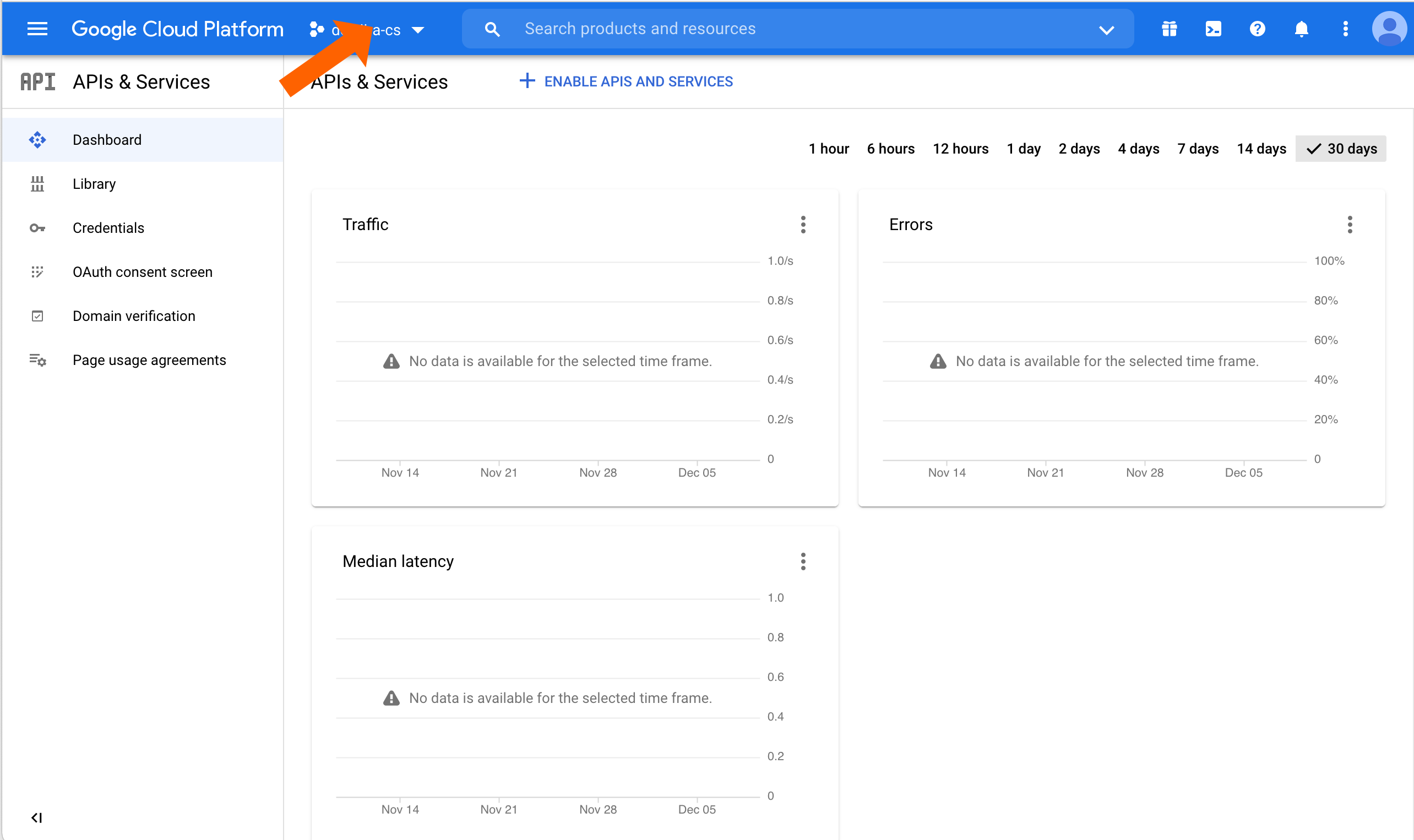
Click NEW PROJECT.
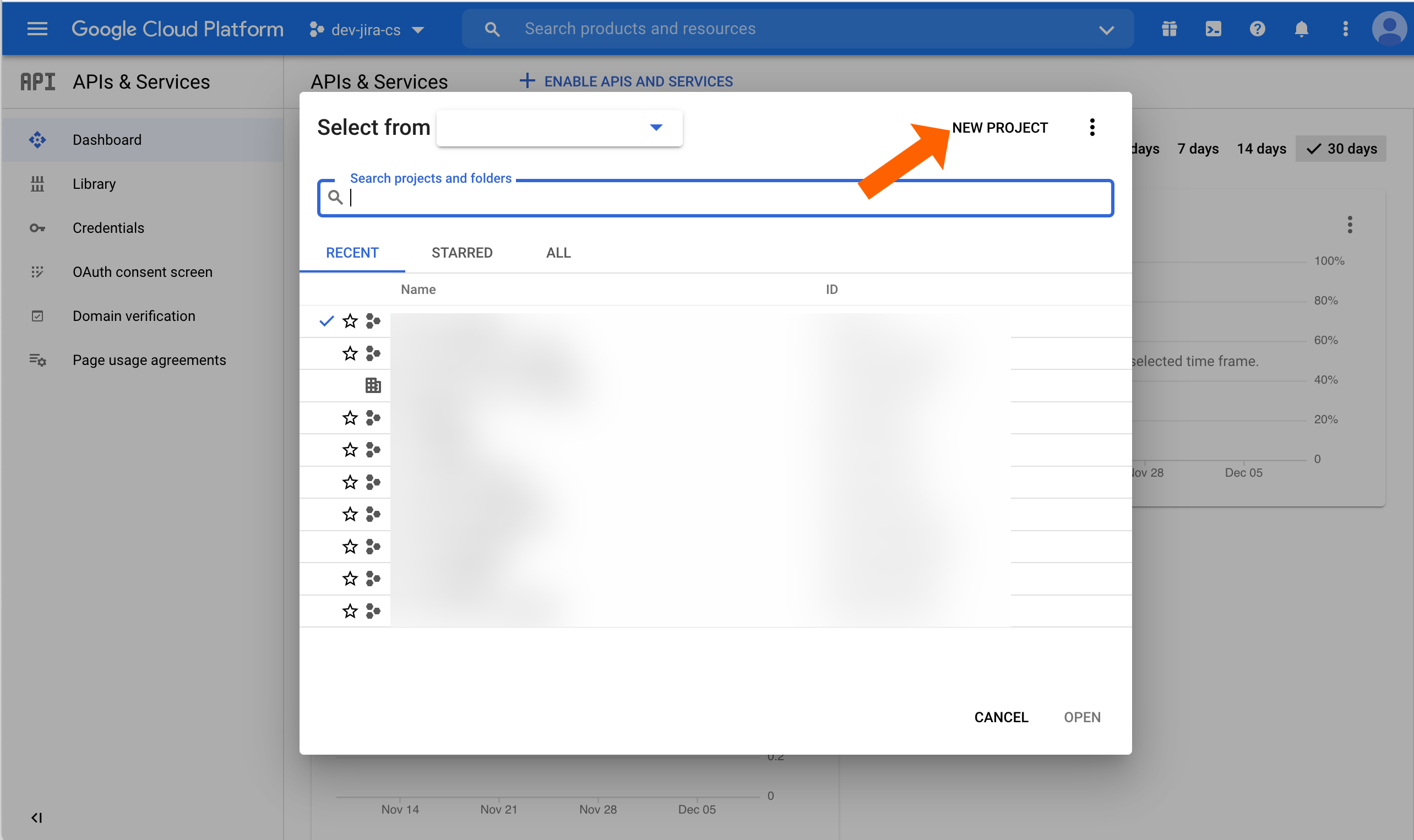
Enter a Project name and adjust the Organzization or Location options if needed.
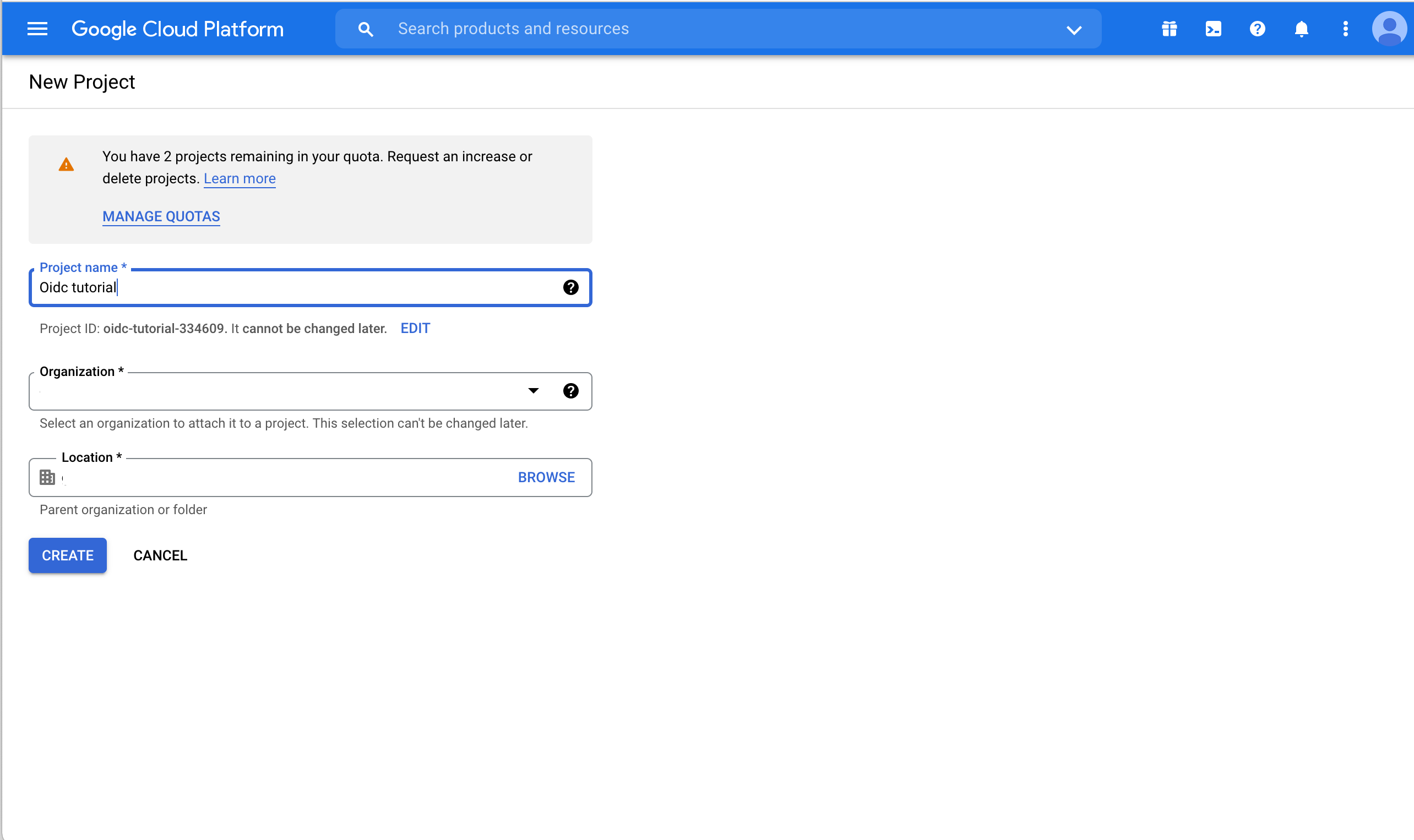
Creating the project can take some seconds. When done, a notification popup will appear. Click SELECT PROJECT to switch to the just created project.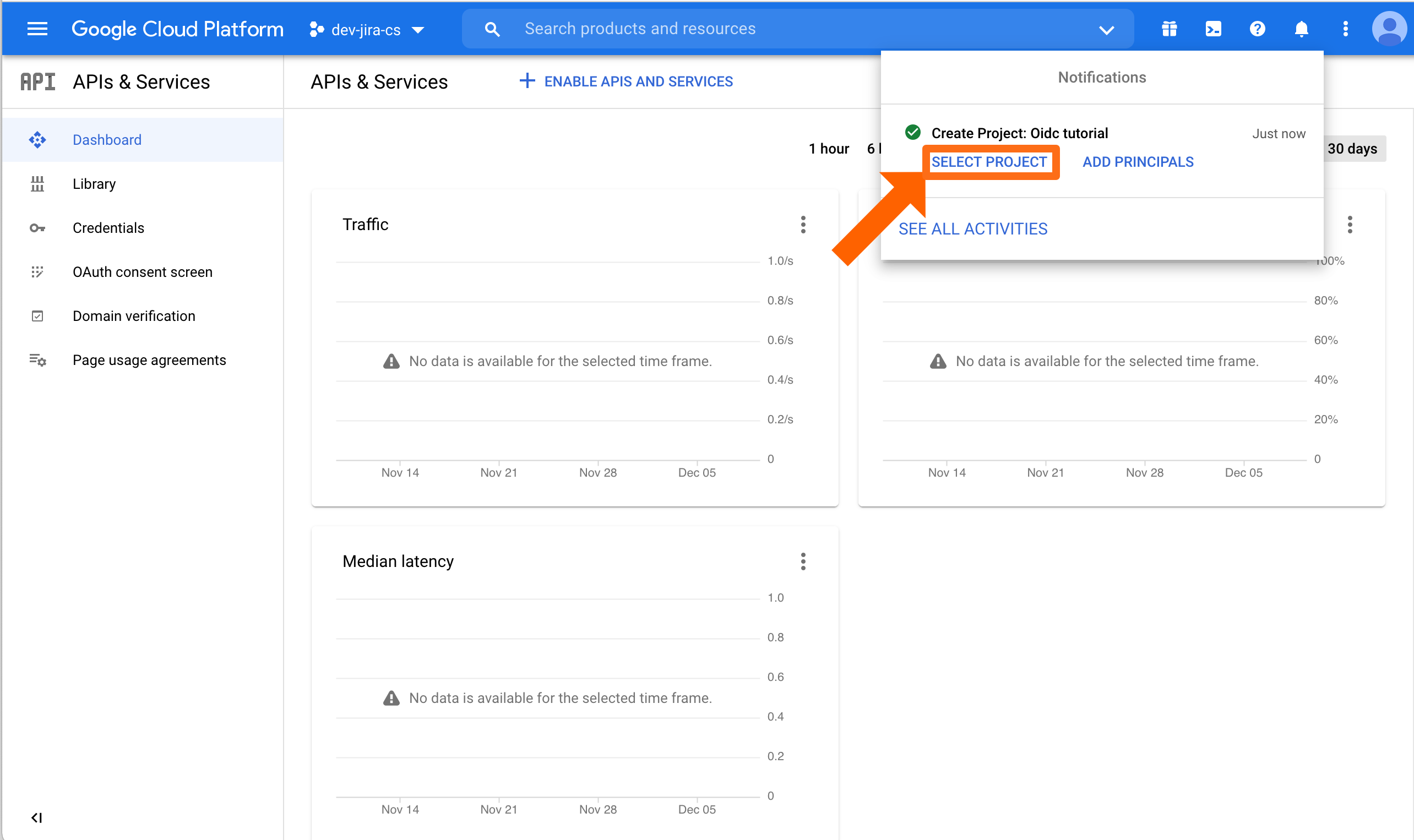
Now, we need to configure credentials and the consent screen. Click Credentials.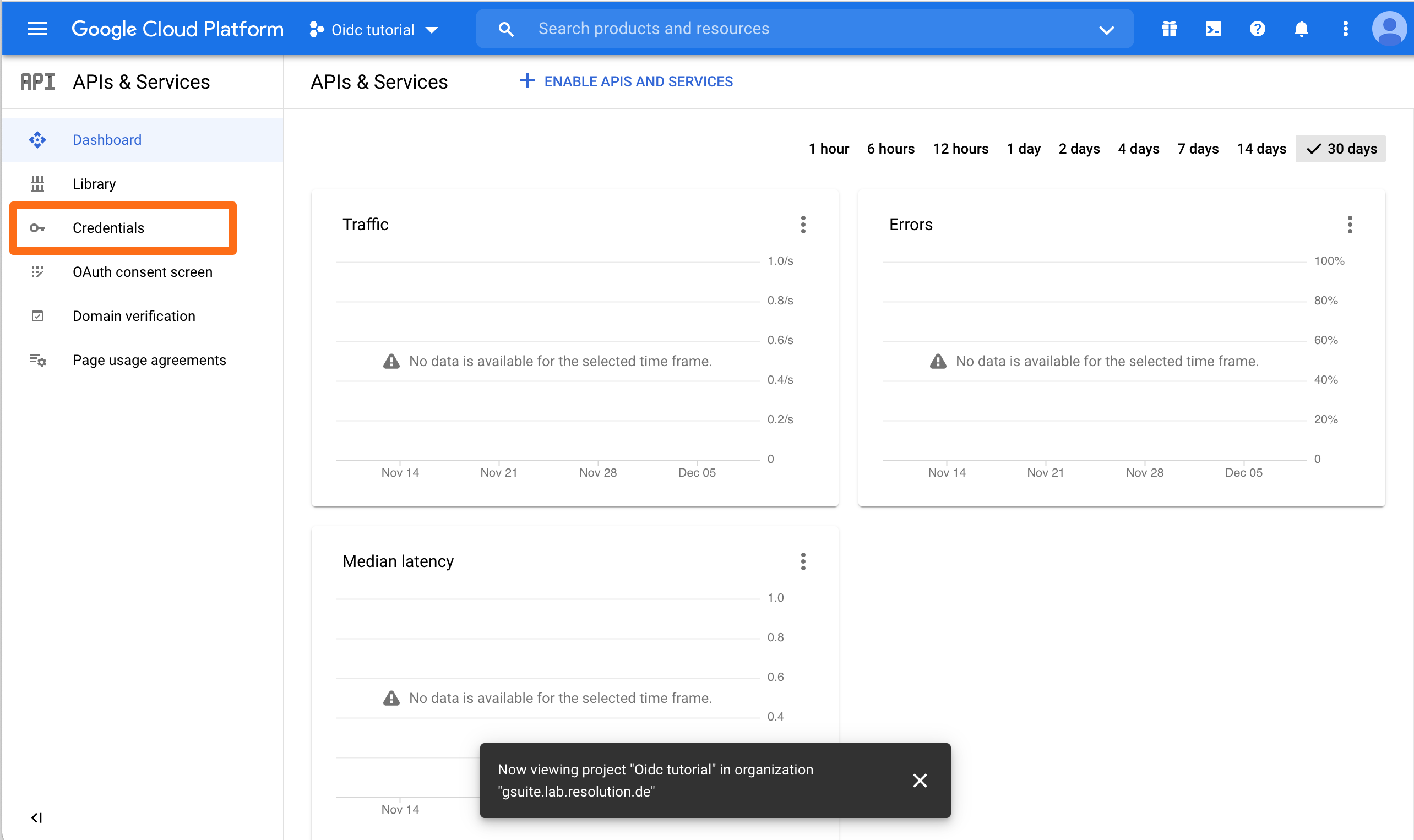
Click CONFIGURE CONSENT SCREEN.
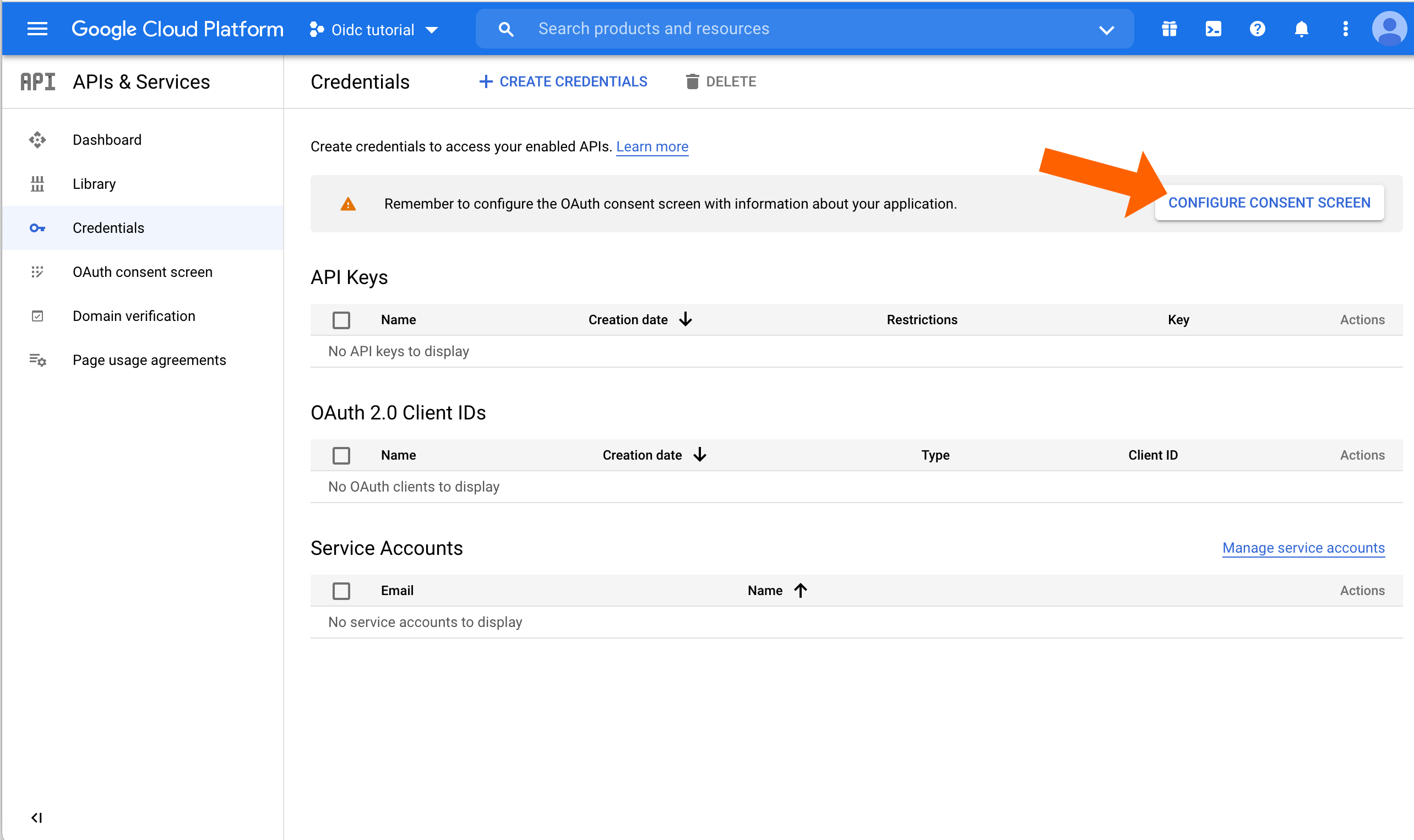
Select the User Type that is appropriate for your needs. Usually this will be Internal. Afterwards, click CREATE to continue.
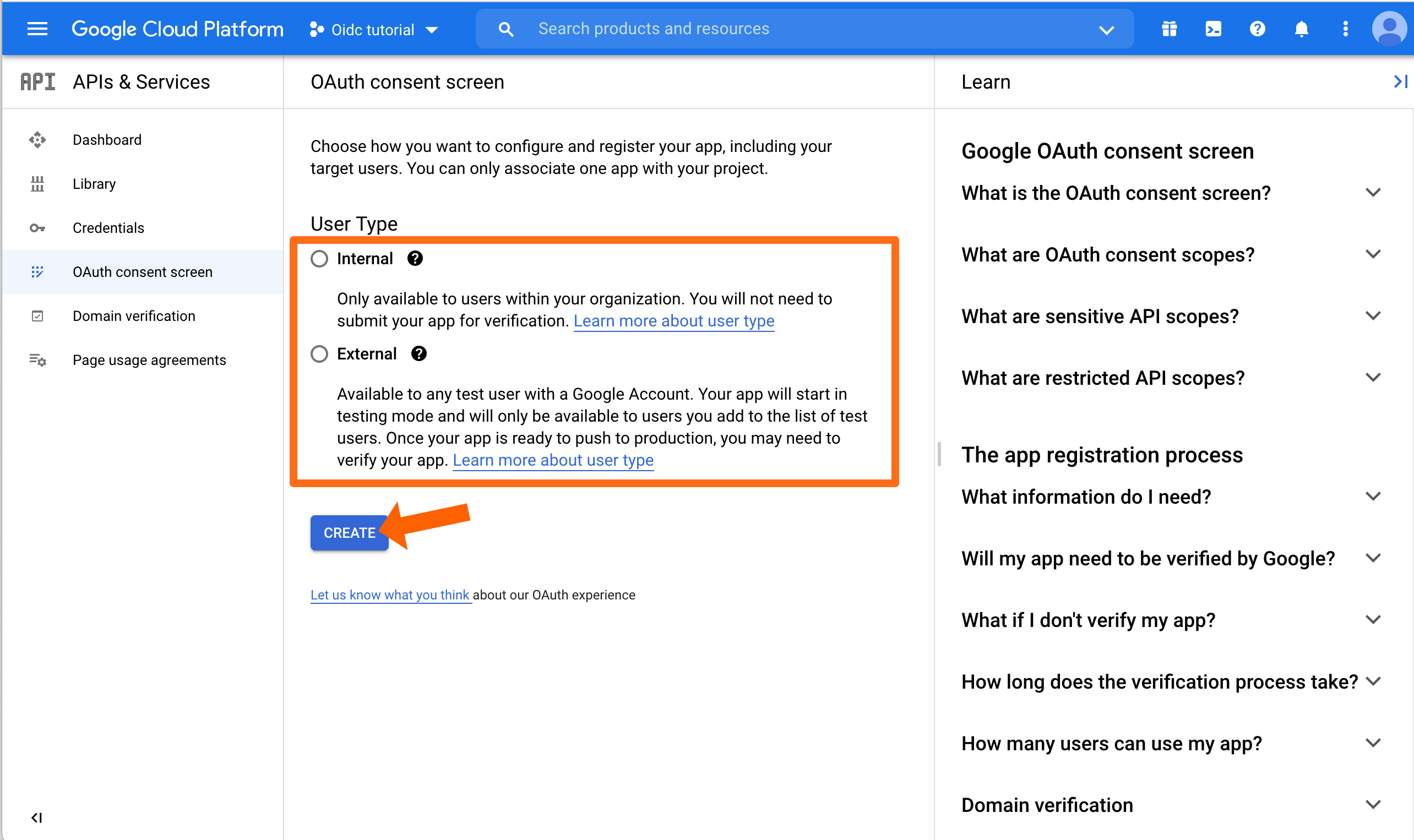
On the next screen, fill out what's needed. Make sure to scroll down and add the Authorized domain(s). This is the domain of your Atlassian application, e.g. for bitbucket.resolution.de, the domain is resolution.de
Click SAVE AND CONTINUE.
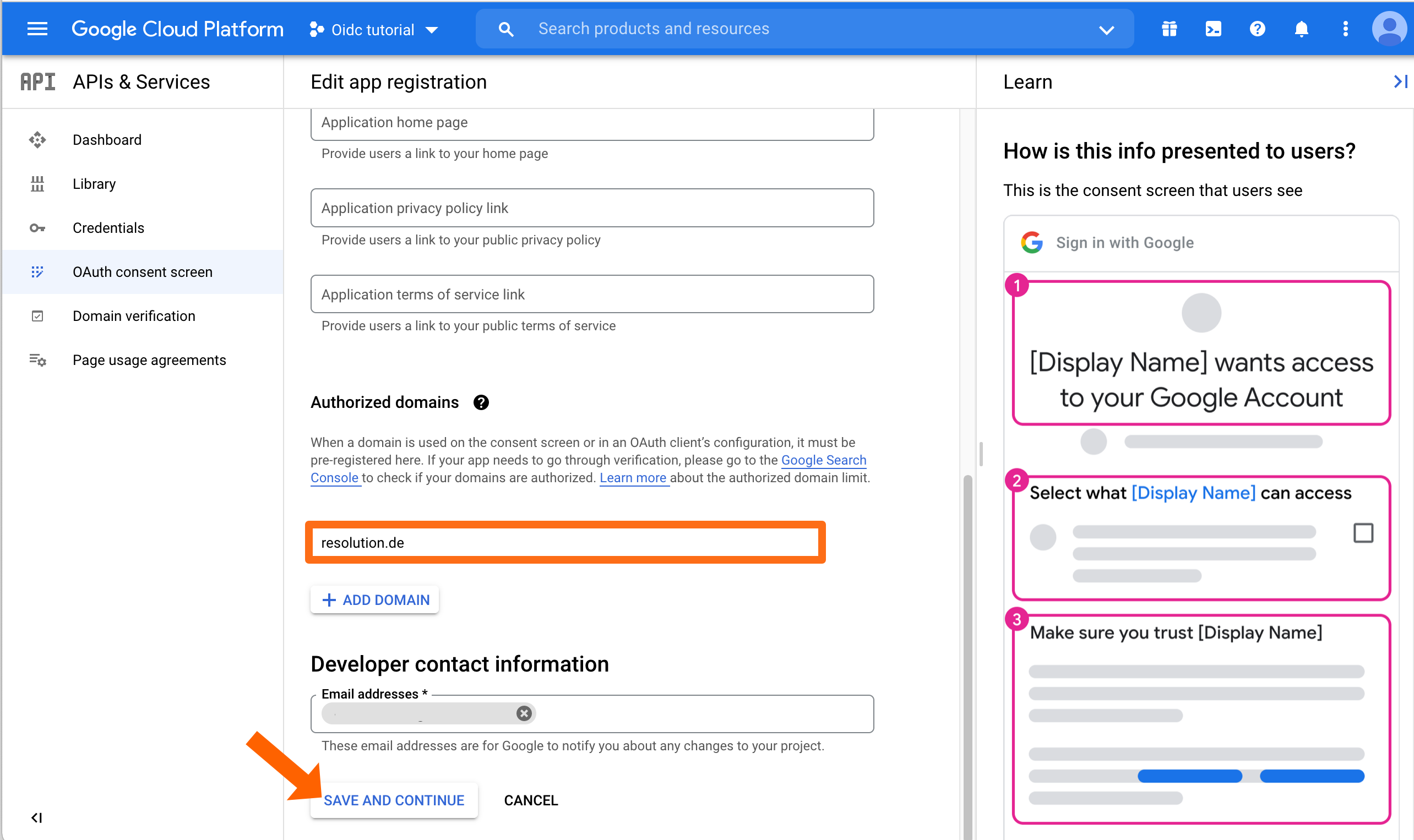
As a last step, Google will display an overview upon the consent screen that you must acknowledge.
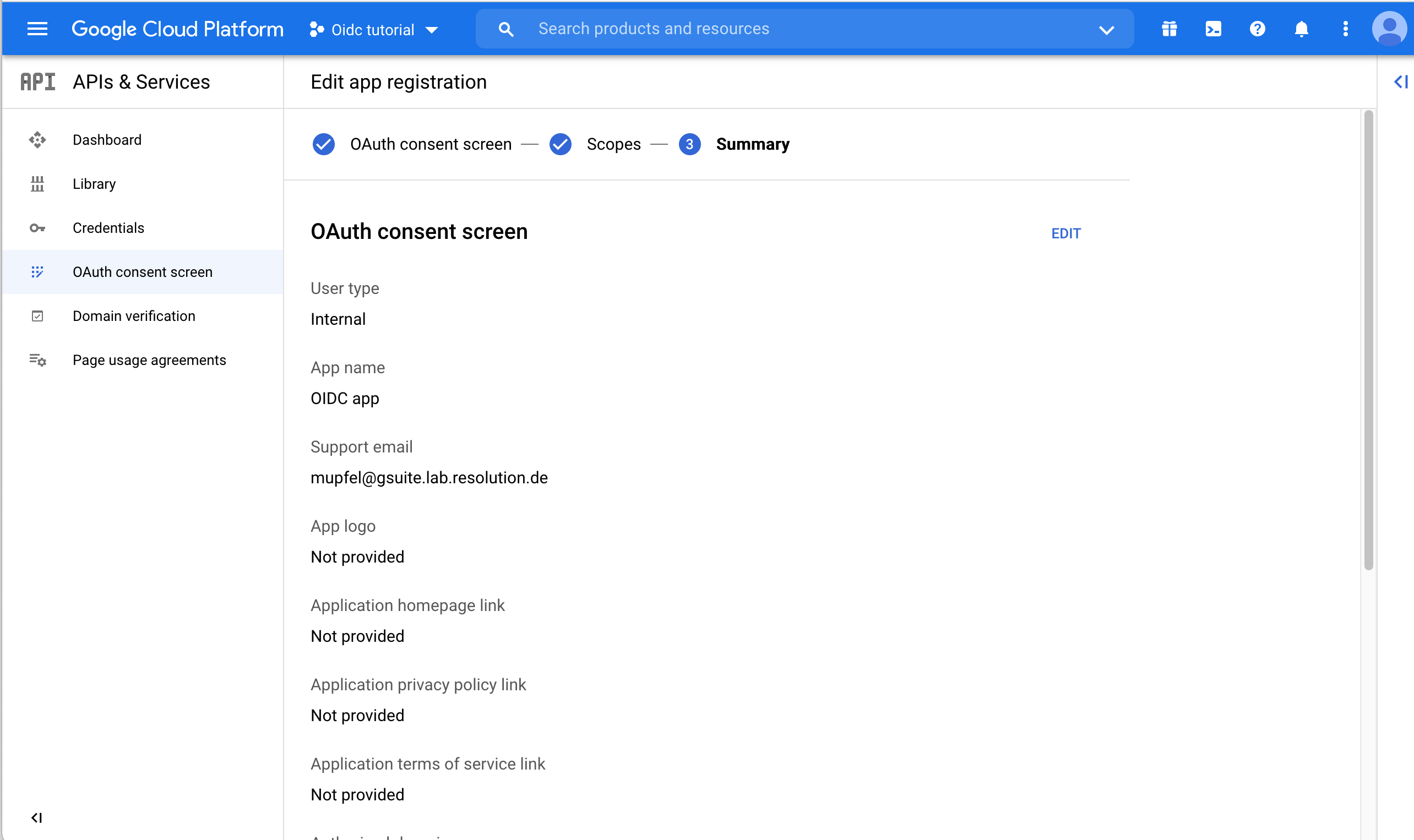
Next, go back to the Credentials.
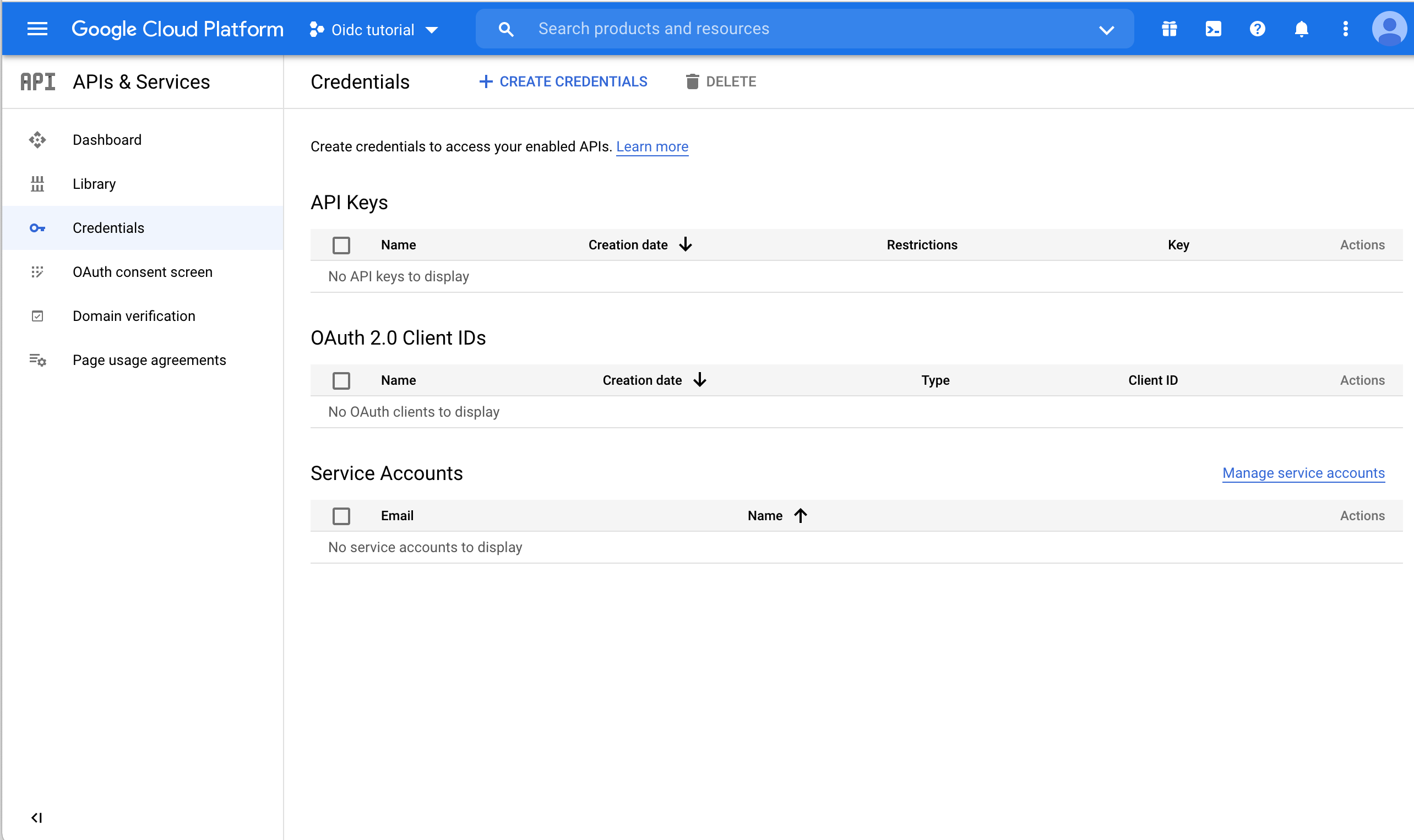
Click CREATE CREDENTIALS and choose OAuth client ID.

Choose Web Application for the Application Type.
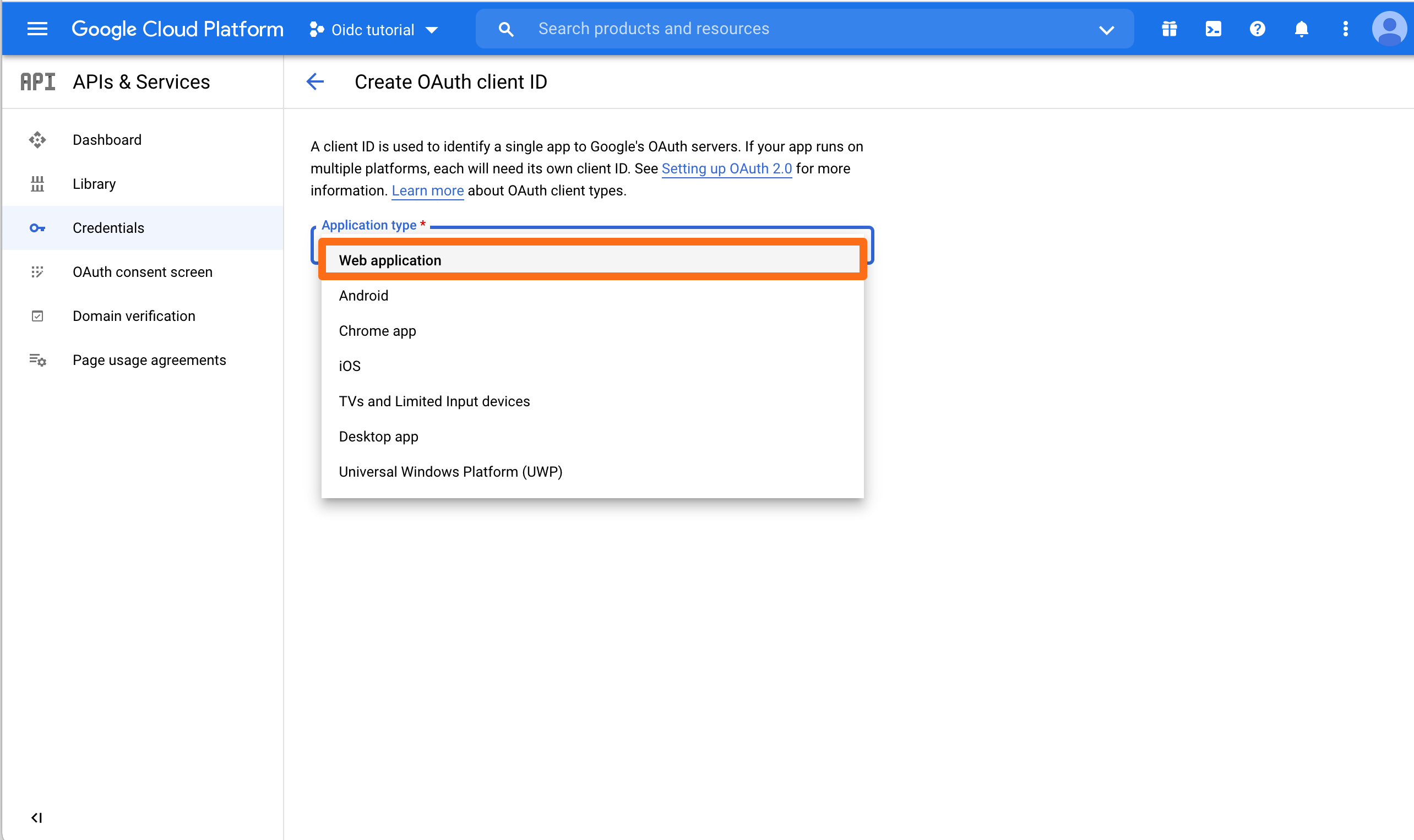
You can enter a name for Web client, but you do not need to. Important is to add the callback URL to the Authorized redirect URIs. Then click CREATE.
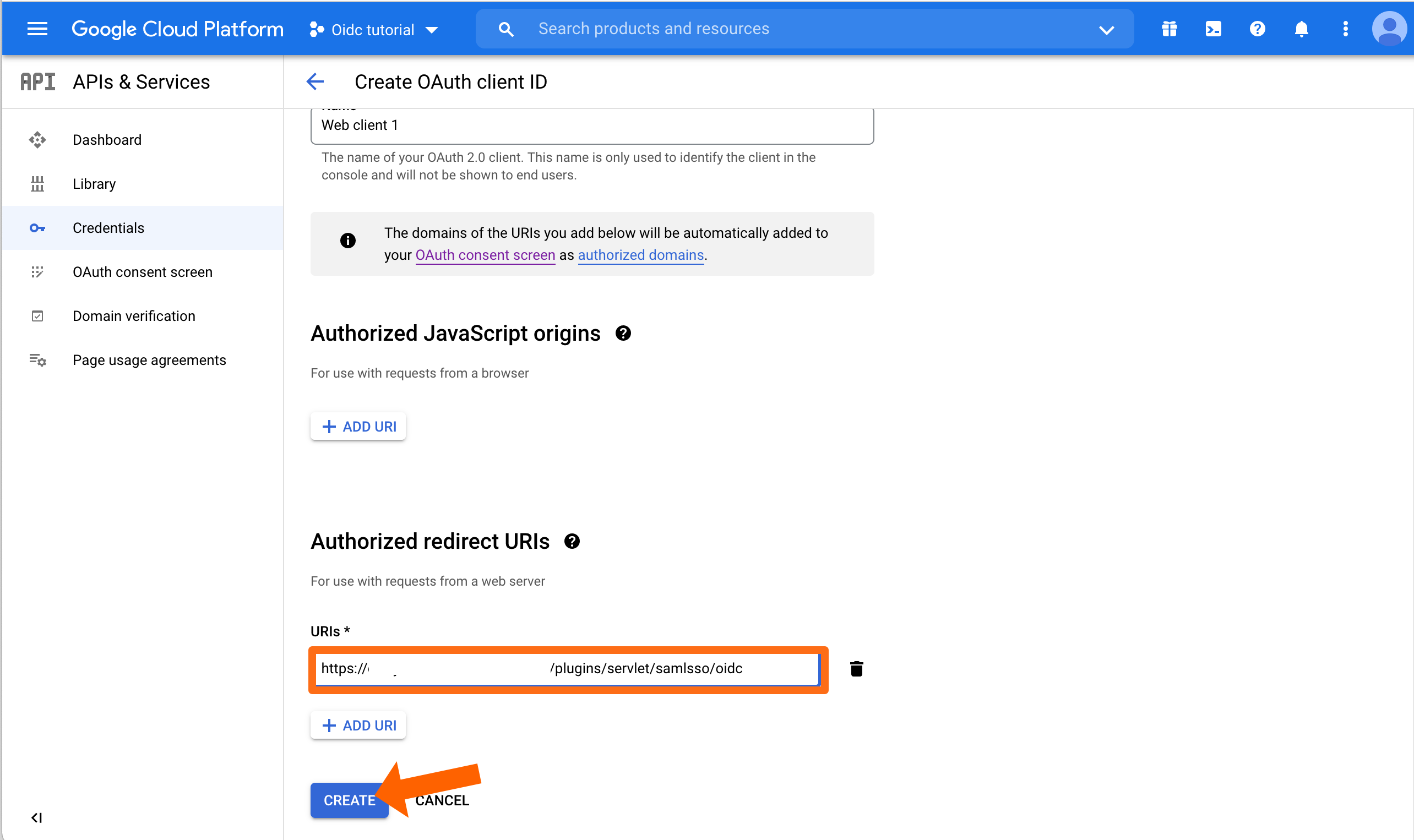
Google will now display both Client ID and Client Secret. Copy both into a text editor of your choice because we need again soon.
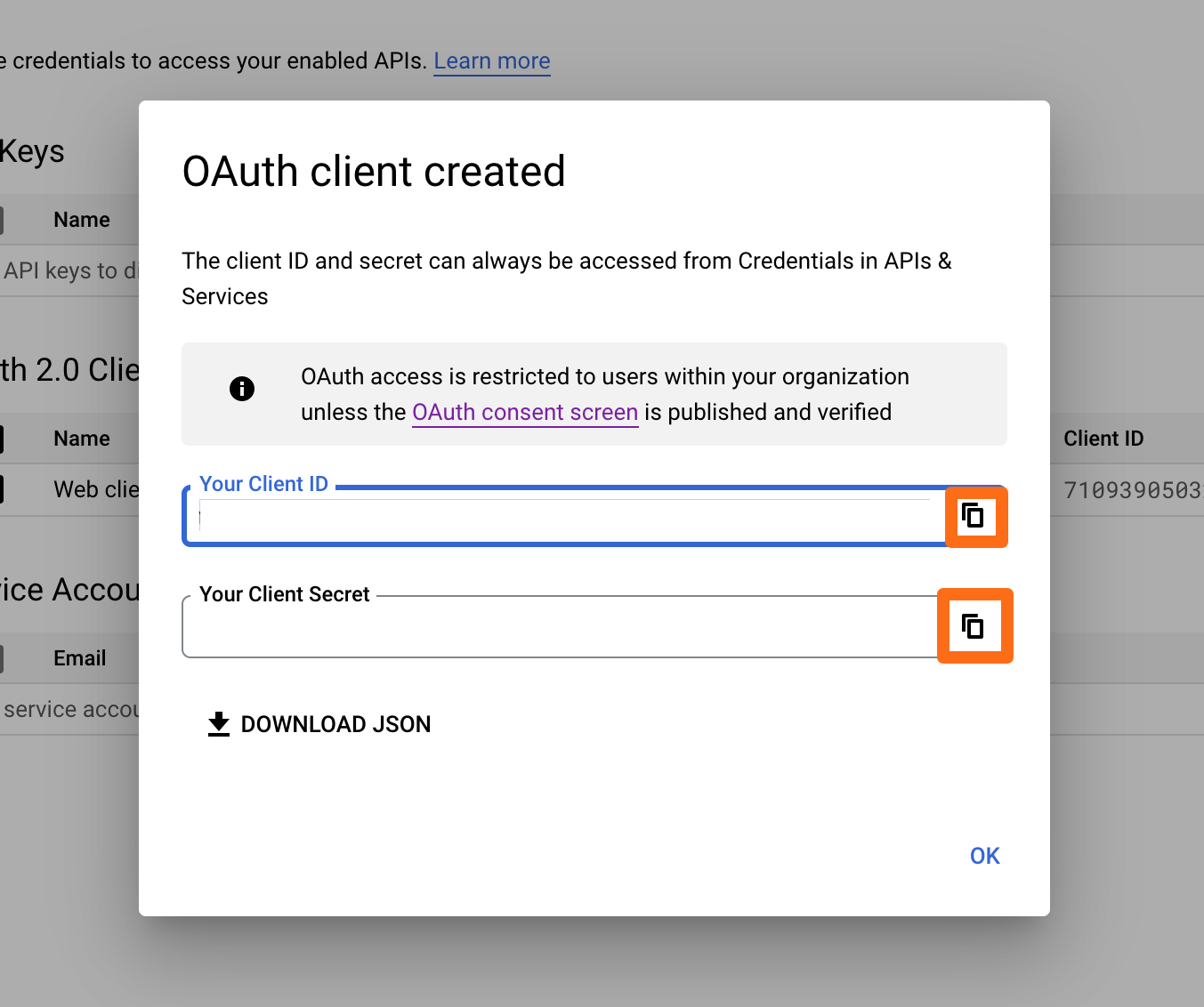
Back to the wizard in the Atlassian product, enter both the Client ID and the Client Secret that you've just created and copied, and click on Next.
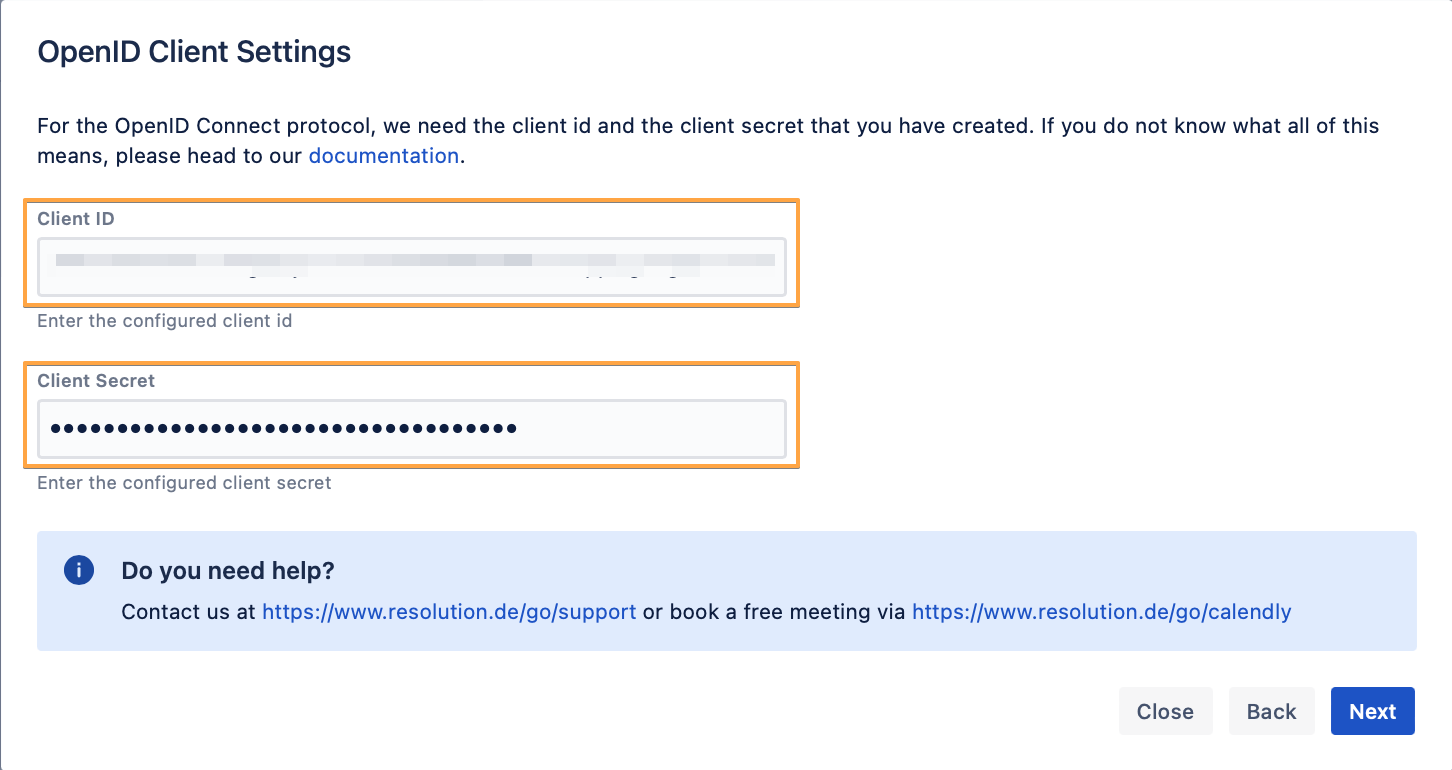
Click Import Metadata.

You will see this message if the import was successful.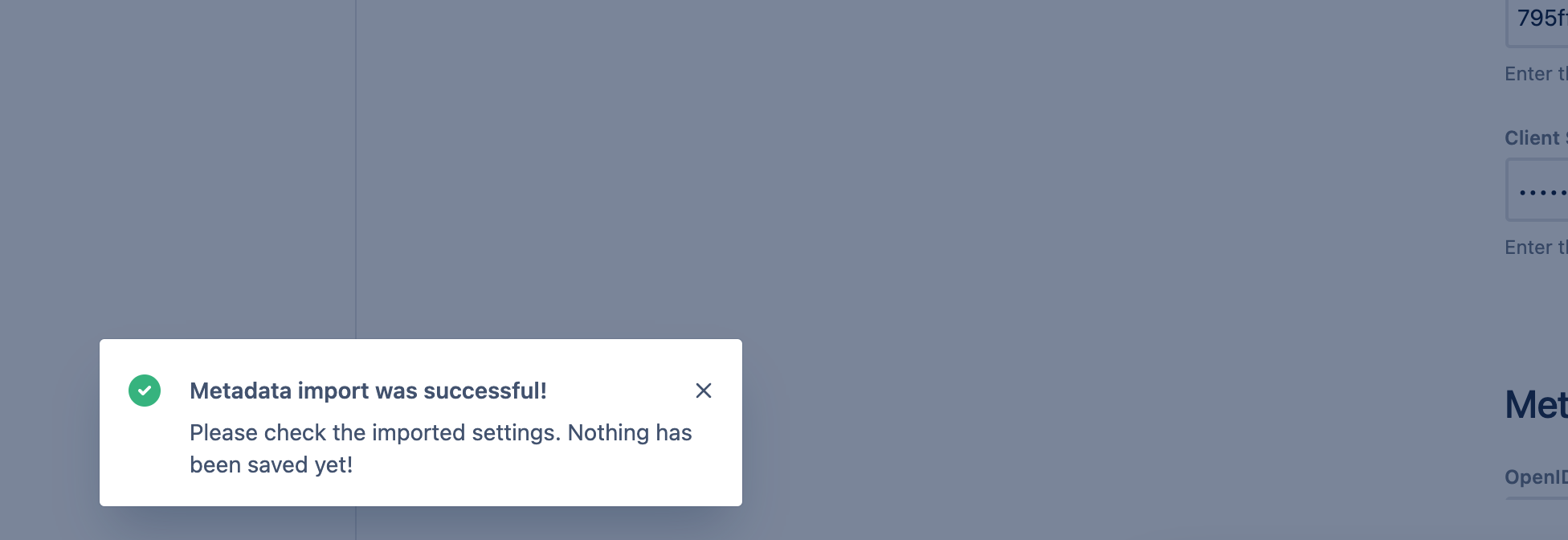
To finish the wizard, click Save and Close.

Next, scroll down to the User Creation and Update section. Choose Update with UserSync for the User Update Method.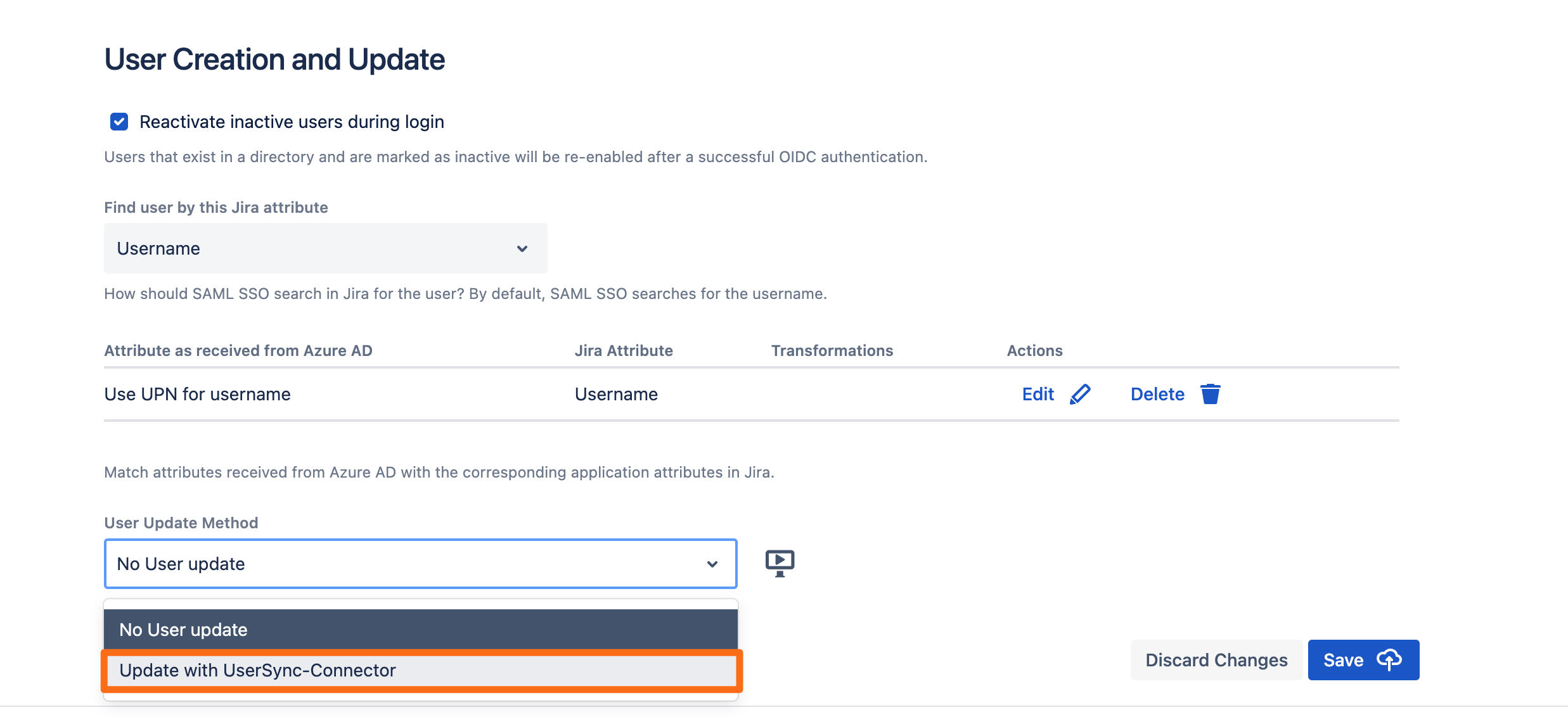
Choose the connector you have created before and click Save.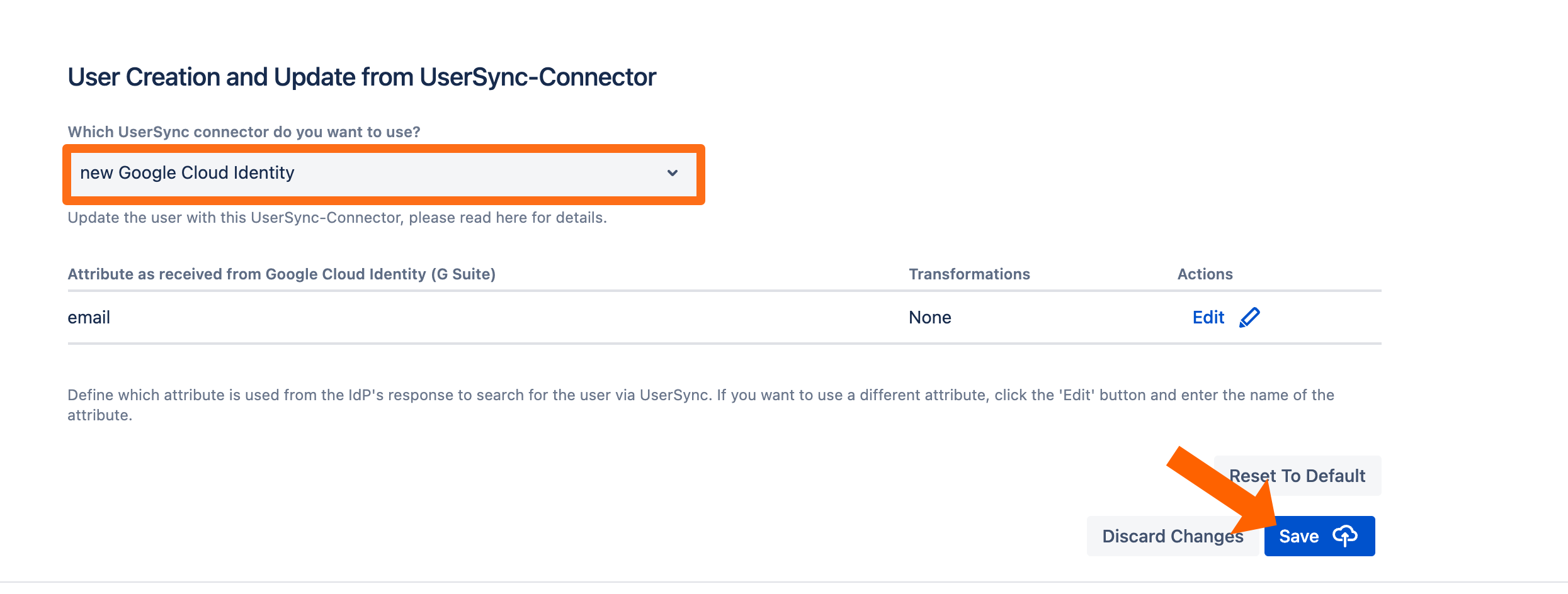
Testing SSO
To test you configuration, go to the System & Support section of the app and scroll down to the Tracker List.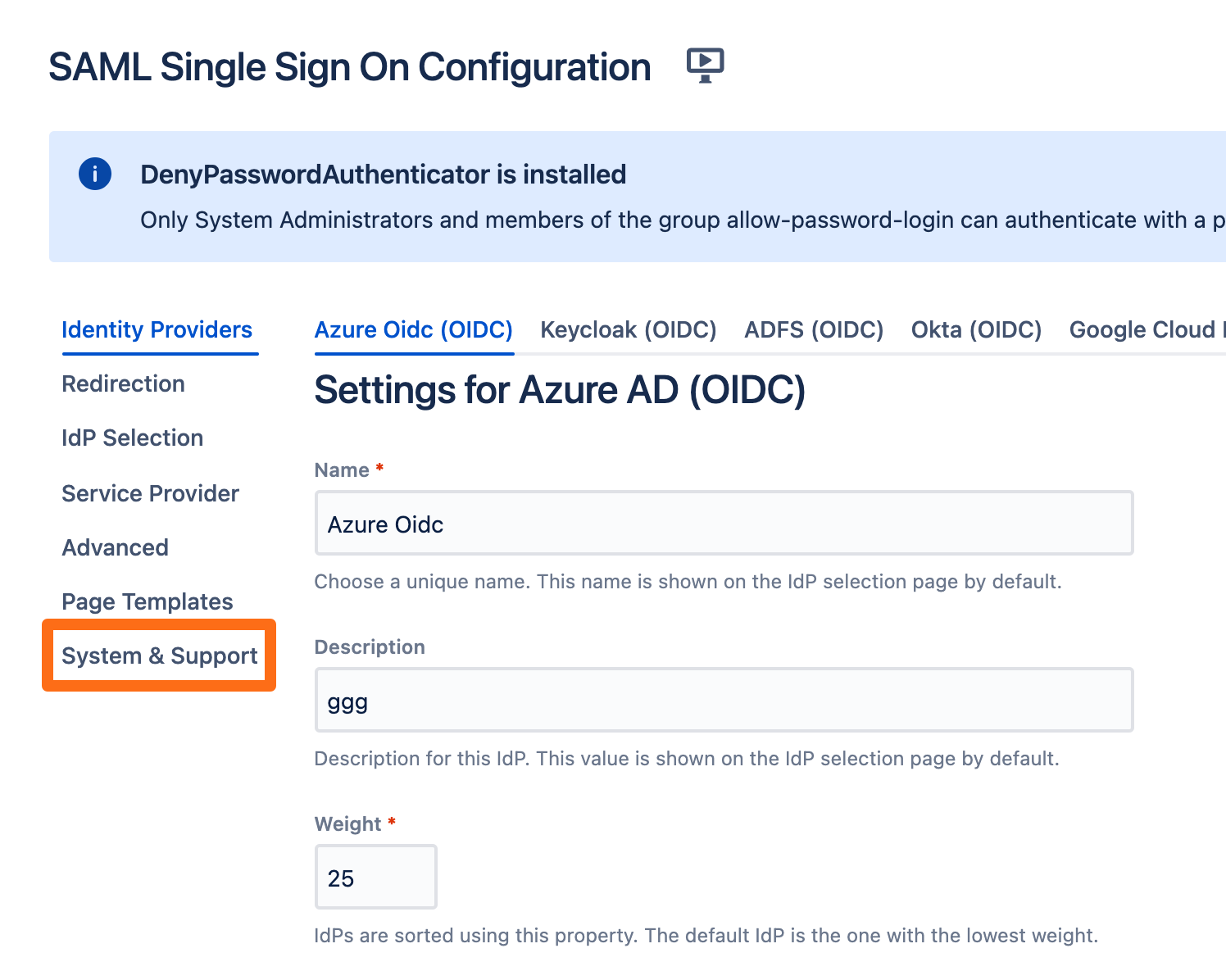
Click New Tracker. If you have more than one identity provider configured, you must choose which configuration should be used for the log in test.
Copy the test url and open the link an incognito web browser. If something goes wrong during the test, you can easily create a support ticket that includes this tracker by click Contact Support. Additionally, you can contact us by going to https://www.resolution.de/go/support or booking a free meeting via https://www.resolution.de/go/calendly.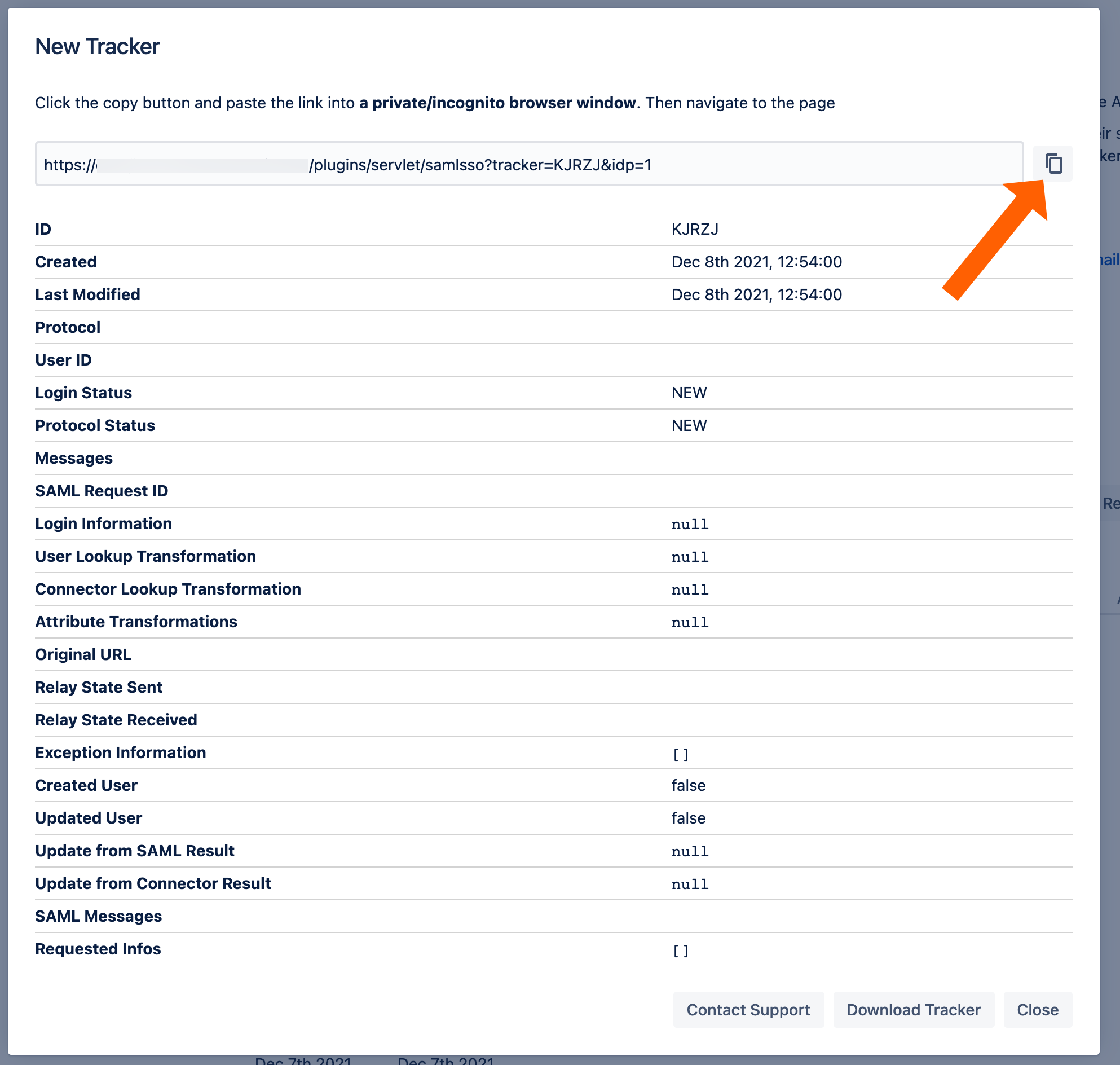
Redirect to SSO
After a successful test, the next step is to configure the redirection. With the redirection setting, the app can automatically redirect users to log in via OpenID Connect.
Go change this setting, go to Redirection from the middle panel.
By checking Enable SSO Redirect, users will get redirected to the configured SSO provider for login. If you are running JSM, you find a second option below.
Click Save to finish the configuration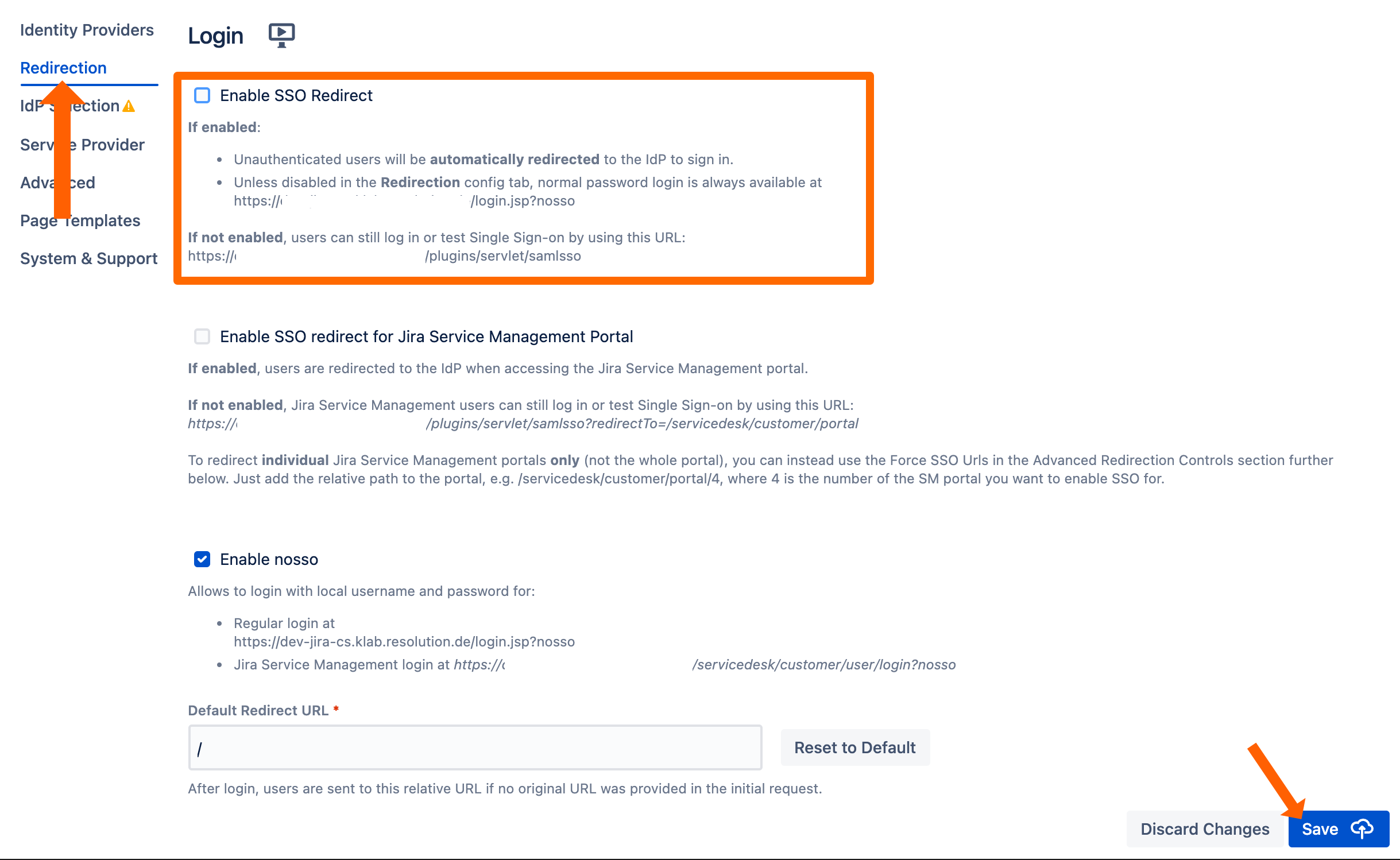
If Enable SSO Redirect is enabled, you can log in to your Atlassian application manually by browsing to the URL that matches your Atlassian application as listed below.
Use this URL, if you need to log in as a local user unknown to Okta or if there are any issues with Single Sign On.
Jira: https://<baseurl>/login.jsp?nosso
Confluence: https://<baseurl>/login.action?nosso
Bitbucket: https://<baseurl>/login?nosso
Bamboo 5: https://<baseurl>/userlogin!default.action?nosso
Bamboo 6: https://<baseurl>/userlogin!doDefault.action?nosso
Read more about nosso here: https://wiki.resolution.de/doc/saml-sso/latest/jira/further-configuration/disable-password-login-with-nosso-parameter-v2-1-0
